





Veterinarian
The Publication of the California Veterinary Medical Association | Volume 76 Number 06 • November–December 2022
2023 in Long Beach
28 Economic Survey Results Page 20
California
PacVet
Page




4 Upcoming CE 5 Director’s Corner 6 First-Year Veterinarian 7 News & Now 12 Compliance Corner 43 CVMA Remembers 48 Student News 49 University News 52 Classifieds 54 Ad Index 54 Statement of Ownership New CVMA Member Benefit: LetsGetChecked New Laws for 2023 Small Animal Physical Therapy and Rehabilitation 13 17 38 Inside This Issue Upcoming CE 14 Online Seminars 15 Spring Seminar in Yosemite 28 2023 Pacific Veterinary Conference in Long Beach Pursuing Excellence in the Veterinary Profession Features Volume 76 Number 06 | November–December 2022 Departments Contents 8 Nominate an Outstanding Colleague for a CVMA Award! 9 Member Profile: Louisa Asseo, DVM, DABVP (Canine/Feline) 10 Legislative Wrap-Up 13 New CVMA Member Benefit: LetsGetChecked 16 Veterinary Medical Board Report 17 New Laws for 2023 18 Access to Care in Action: DEI Principles Used to Break Down Barriers to Care 20 CVMA 2022 Economic Survey Report—Part 1 38 Small Animal Physical Therapy and Rehabilitation 40 Highly Pathogenic Avian Influenza Found in California 42 Welcome to Our New Members! 44 Record Keeping — But There’s More! 46 Applying Ergonomics to Reduce Injuries in Veterinary Practices 47 Something to Wag About 50 Treasurer’s Report 3
New Laws for 2023
January 10, 2023 | 12:30 PM–1:30 PM (1 CEU)
January 25, 2023 | 5:30 PM–6:30 PM (1 CEU)
For more information, see page 14. This webinar is complimentary for CVMA members!
CVMA Spring Seminar in Yosemite

March 3–5, 2023
12 CEUs for veterinarians, registered veterinary technicians, and CVMA CVAs

For more information, see page 15.
Sponsored by:
Pacific Veterinary Conference in Long Beach

June 9–12, 2023 | 28.5 CEUs
For more information, see page 28.
Sponsored by:

California Veterinarian
The Publication of the California Veterinary Medical Association
Publisher Dan Baxter
Managing Editor Kristen Calderon
Editor Taryn DeOilers
Classified Advertising Laura Phillips
Board of Governors
President Dr. Keith Rode
President-Elect Dr. Michael Karle
Member-at-Large Dr. Jennifer Hawkins
Members
Dr. Peter Bowie
Dr. Patrick Connolly
Dr. Misty Hirschbein
Dr. Adam Lauppe
Dr. Julia Lewis
Dr. Peter Mangold
Dr. Diane McClure
Dr. Teresa Morishita
Kristi Pawlowski, RVT
Dr. Kevin Terra
Dr. Peter Vogel
Dr. Jodi Woods
Treasurer Dr. George Bishop
Chair, House of Delegates Dr. Laura Weatherford
Student Representatives
University of California, Davis Mary “Molly” Hallsten
Western University Inez Rivero
CVMA Staff
Executive Director Dan Baxter
Assistant Executive Director Della Yee
Director of Communications Kristen Calderon
Director of Finance Kathy Van Booven
Director of Regulatory Affairs Dr. Grant Miller
Membership and Student Services Manager Laura Phillips
Publications Manager Taryn DeOilers
Accountant Shanna Allen
Accountant Bernice Evans
Communications and CE Coordinator Nicole Campos
Finance Coordinator Sharmele Browne
Graphic Designer Marissa Collier
Meetings and Events Coordinator Lily Briggs
Meetings and Events Coordinator Erica Ferrier
Membership Coordinator Jennifer Smith
Receptionist Mary Young
Display Advertising
Please contact Taryn DeOilers at 916.649.0599 ext. 16 or email tdeoilers@cvma.net.
Registration for all CVMA events can be made online by logging onto cvma.net, via the CVMA mobile app, or by calling 800.655.2862.
Tell us what you think!
California Veterinarian (ISSN 00081612) is published bi-monthly by the California Veterinary Medical Association, e-mail: staff@cvma.net. California Veterinarian is an official publication of the California Veterinary Medical Association. Annual subscription rates to non-members: $50 U.S., $60 Canada/Mexico, $70 overseas. Price per single copy: $10 current year, $12 back issues. Periodicals postage paid at Sacramento, CA and at additional mailing offices. POSTMASTER: Send address changes to California Veterinarian, 1400 River Park Dr., Suite 100, Sacramento, CA 95815-4505. Phone: 800.655.2862
The CVMA and California Veterinarian assume no responsibility for material contained in articles and advertisements published, nor does publication necessarily constitute endorsement by them. ©2022 CVMA

Want to comment on what the CVMA is doing or writing about? Send an email to comments@cvma.net or call 800.655.2862. Your thoughts and opinions matter to us. The CVMA is YOUR association! The CVMA is 7,800 voices strong. Let us hear your voice!

Volume 76 Number 06 • November–December 2022
MRC CA CALIFORNIA VETERINARY MEDICAL RESERVE CORPS CVMA-Affiliated Programs TOPAZ GlobalVetLink DIAMOND SAPPHIRE EMERALD Upcoming CE California Veterinarian • November–December 2022 cvma.net 4
This year has been an interesting and impactful one on the legislative front. Proposed bills on myriad items—ranging from clinical cannabis recommendations to a “Dog and Cat Bill of Rights”—have come and gone, and in each instance the CVMA’s staff and lobbyists worked hand-in-glove with CVMA leadership to advocate on behalf of the veterinary profession. In this manner, 2022 was not unlike any other year…many bills, much analysis, and considerable time and effort devoted to communicating and advocating the CVMA’s position in the most effective way possible.
However, in one key aspect, 2022 has been a very different year, as it represents the last year on the job for the CVMA’s longtime lobbyist, Mike Dillon. For over four decades, Mike has devoted his outstanding representative efforts to the CVMA and veterinary medicine. Adequately conveying the impact that Mike has made to the veterinary profession in the context of a one-page column is a literally impossible task (and in this case, “literally” means “literally”), but suffice it to say that over the course of his career, Mike has helped the CVMA navigate hundreds of complex and contentious issues, and has been instrumental in shaping our profession into what it is today. While the CVMA “officially” celebrated Mike’s work at our joint Board of Governors and House of Delegates meeting in June, we would be remiss to not additionally acknowledge that work to the readers of California Veterinarian.
As the longest running registered lobbyist in California, Mike has known “everybody who is anybody” in Sacramento’s governmental circles, from the mail runners and appointment schedulers, to the legions of legislators who have walked the halls of the State Capitol, to governors ranging from Jerry Brown (first term!) to Gavin Newsom. With impressive consistency, Mike has cultivated strong, productive working relationships with a diverse community of legislators from both sides of the aisle, and helped to burnish the CVMA’s reputation not only as a rational, even-handed and truthful stakeholder, but a trustworthy and authoritative resource for legislators and legislative staff on issues impacting the profession. In that regard, legislative staff come to us for answers and input, which is a boast that many professional associations are not able to make. In short, the CVMA’s high standing at the Capitol is due in no small measure to the consistency and quality of Mike’s work, and that of his daughter and lobbying partner, Christina DiCaro, the latter of whom will continue to represent the CVMA going forward.
In that vein, one critical feature that has distinguished Mike’s work over the years is his respectful and, indeed, classy approach to lobbying. His “they go low, we go high” ethos has garnered Mike the attention, trust, and admiration of lawmakers, and has worked to get the CVMA’s foot in the door and make our voice heard on issues large and small. Mike has a knack for befriending people and managing discourse in a way that casts the veterinary profession in the best possible light, and Mike’s efforts in that regard have been essential to making the CVMA a “go-to” source of balanced and honest information on which lawmakers rely in shaping public policy. I could go on, but the physical limits of this column are rearing their head. So, let me conclude by simply saying: Thank you, Mike, for all that you have done, and may your retirement be as personally nourishing as your professional efforts have been for the CVMA and the practice of veterinary medicine…and, hit ‘em straight!
 Dan Baxter, Executive Director
Dan Baxter, Executive Director

5 View this issue of the California Veterinarian online at cvma.net.
Telling Hard Truths
By Anne Chiruvolu, DVM
There are some nights I finish up at the hospital at 6:00 PM. My medical records written and patients discharged, I arrive home around suppertime. As I open the door I’m greeted by my children rushing to give me hugs and tell me about their days, and my dogs barking and wagging their whole bodies with joy. I’ll tell my kids about a cute puppy I vaccinated that day, or a tasty treat a client brought. And when the sun goes down I give them hugs and kisses as I tuck them into bed.

Tonight was not one of those nights. An urgent care visit for a cat who refused to eat turned very serious when I discovered she had lost half her body weight in a matter of months and diagnostics pointed toward neoplasia. Then a “recheck skin” appointment turned into a cardiac workup with a possible UTI, and another pet presenting for a Cytopoint injection wound up needing thoracic radiographs for a chronic cough and a long discussion on allergic skin disease and diet trials. Meanwhile, messages, lab results, and callbacks piled up and the technicians were rushing around trying to keep up with the diagnostics and treatments I was ordering. At 6:30 PM, instead of sitting down to dinner with my children, I sat with the owners of the hyporexic cat as they tearfully decided to humanely euthanize her. She was their first cat, and as we talked she purred softly on a blanket between us—painfully thin, dehydrated, and disheveled, but still a sweetheart. It was a difficult goodbye.
I never rush a euthanasia, and by the time they said their goodbyes and left with their keepsake pawprints I was ready to face the mountain of unfinished charts on my desk. When I finally arrived home, well after dark, my toddler was fast asleep, but my six-year-old was awake in bed and expecting an explanation. I told her there was a very sick kitty who needed my help. “Did she die?” she asked, never one to mince her words. I told her that she did. “Did you make her die?” she asked. “Yes, she was so sick that she couldn’t get better. So I gave her a special medicine to help her die peacefully.” She asked me how the medicine worked, and where the cat’s remains would go. We talked about it all. Then she asked me, “Will you tell me the truth about something, even if you don’t want to?”
I thought, suddenly, of the owners of that cat. In a way, they had asked the same of me, tearfully, looking for hope, looking for a way to save their companion who had
brought so much joy into their lives. And even though I didn’t want to, I did tell them the truth: that based on the diagnostics I had run and the history they had given me, their sweet cat was likely beyond saving. In fact, at work I am often telling the truth even when it hurts—when a pet presents for an annual exam and I find a worrying mass or heart murmur, or when I fear a recommended course of treatment may be beyond an owner’s financial means. The truth can be heart-wrenching to tell, but it’s my duty to tell it, both as a doctor and as a parent.
Snapping back into the moment, I responded to my daughter: “Yes, of course. What is it?”
She looked up at me with her small, serious face and asked, “Are you the tooth fairy?”
First-Year Veterinarian 6 California Veterinarian • November–December 2022 cvma.net
Upcoming Meetings
NOVEMBER 17
CVMF Board Meeting
DECEMBER 7
VISC Board Meeting
DECEMBER 8
VISC Strategic Planning Meeting
JANUARY 12
Inclusion and Diversity Committee Meeting
JANUARY 20
CVMA Board of Governors Meeting
JANUARY 21–22
CVMA Leadership Forum and Board of Governors/House of Delegates Meetings
FEBRUARY 12
RVT Committee Meeting
FEBRUARY 28
CVMA Finance Committee Meeting
MARCH 25
CVMA Board of Governors Meeting
JUNE 9, 2023
Joint Board of Governors/ House of Delegates Meeting
CVMA News Now
Happy Holidays from the CVMA!
2022 has proven to be yet another successful, fulfilling year at the CVMA. We are ever-thankful for the opportunity to support and strengthen the wonderful veterinary community and the animals they serve throughout the state. We wish all of our members and their loved ones a healthy and cheerful holiday season, and we look forward to another productive year in 2023!
Apply Now for the Don Low Fellowship

Applications for the 2023–2024 Don Low Fellowship are now being accepted! A collaborative effort between the CVMA and the UC Davis Veterinary Medical Teaching Hospital faculty, the Donald G. Low-CVMA Practitioner Fellowship is designed to meet California practitioner needs that are unavailable within residencies or other current programs. Practitioners will have the opportunity to learn alongside faculty, residents, and students in the clinical setting of the William R. Pritchard Veterinary Medical Teaching Hospital, and in other school programs, laboratories, and centers like the Veterinary Medical Teaching and Research Center. The deadline for applications is December 22, 2022. To apply, visit ce.vetmed.ucdavis.edu/fellows/don-low-fellowship.
New Name Tag Requirement
Starting January 1, 2023, select veterinary staff members will be required to wear nametags when interacting with the public. To assist in compliance with nametag printing needs, the CVMA is pleased to offer our members a 10% discount on a variety of printing services through The Castle Press. Members can also receive printing discounts on controlled substance security pads, regular prescription pads, letterhead, business cards, and more. To access this member benefit, log in to cvma.net and go to the Membership section, then select Member Benefits and Services. Make sure that you are staying compliant with this new requirement!
Advertise with the CVMA!
As the country’s largest state veterinary association, the CVMA provides a unique opportunity for your advertising message to reach thousands of veterinary professionals! We offer both print and digital advertising options, including the California Veterinarian magazine, which is sent out to all CVMA members and every veterinarian in California, and the CVMA’s two e-newsletters, which are also sent out to every CVMA member. For more information and to receive our 2022 Media Kit, please contact Taryn DeOilers at tdeoilers@cvma.net, or click Resources > Display Advertising Opportunities at cvma.net.
7 View this issue of the California Veterinarian online at cvma.net.
= Hybrid or Virtual Event
Award Categories
Nominate an Outstanding Colleague for the 2023 CVMA Awards!
Every year, the CVMA recognizes and awards veterinary professionals and animals who have shown extraordinary dedication to the veterinary profession and community. Do you know a colleague or individual who has gone the extra mile, perhaps taking time out of their busy schedule to mentor others, volunteer for a cause, or participate in organized veterinary medicine? Don’t let their efforts go unnoticed. Nominate them for a CVMA Award! In addition to receiving an award, winners will be recognized in the May/June issue of California Veterinarian and honored at next year’s CVMA Awards and Installation Ceremony.
Lifetime Achievement
This is the CVMA’s most prestigious award, recognizing a member of the CVMA who has made noteworthy contributions to the advancement of veterinary medicine. The award honors veterinarians who have demonstrated outstanding leadership in organized veterinary medicine or otherwise contributed significantly to veterinary medicine in California.
Distinguished Life Membership
Distinguished Life Membership is the CVMA’s highest membership category and is awarded to an individual who has significantly exceeded membership obligations through active participation in CVMA leadership. Nominees must have been a CVMA member for at least 25 years.


California Animal Hall of Fame
This award honors animals who exemplify the affection, loyalty, security, and value of the humananimal bond through unselfish and courageous accomplishments.
Outstanding RVT of the Year in Private Practice
This award honors RVTs in private practice who possess outstanding professional ability, taking into account educational achievements, individual contributions, professional affiliations, and special experience that sets these RVTs apart from others.
Linda Markland Outstanding RVT of the Year in Non-Private Practice
In 2012, this award was renamed to honor Linda Markland, who exemplifies the hallmarks of this award. The award recognizes RVTs in non-private practice who possess outstanding professional ability, considering educational achievements, individual contributions, professional affiliations, and special experience that sets these RVTs apart from others.
RVT’s Outstanding DVM of the Year in California
This honor emphasizes the importance of an educated, certified professional technical staff, and is awarded to a progressive veterinarian who utilizes their RVTs and staff to their fullest potential.
Meritorious Service Award
Nominees for this award can be an individual giving special attention to the human-animal bond, a special program or service offered by an organization, or a media publication that demonstrates a commitment to coverage of veterinary or animal-related stories.
Outstanding Service Award
This award honors those who have been excellent representatives of the profession through active community involvement and/or veterinary service, including participation in veterinary and/or nonveterinary groups and associations.
Additional descriptions of each award, nominating criteria, and nomination forms are available under the Membership tab at cvma.net. You may also contact the CVMA by calling 800.655.2862 or via email at staff@cvma.net for more information and nomination forms.
Deadline for nominations is January 6, 2023
SEND IN A NOMINATION TODAY!
8 California Veterinarian • November–December 2022 cvma.net
I AM THE
Members are the heart of the CVMA
The best advice I’ve ever received is to keep a box of cards, pictures, and letters from clients to remind yourself of all the good you do. This way, when life and cases get you down, you can remember the joyful moments.
An area of veterinary medicine that I would like to explore is outreach and education in developing countries to help with companion and wildlife care, as well as sustainability practices within the scope of veterinary medicine to help lessen our impact on the environment.
My words of wisdom for new veterinary professionals are that we are part of a beautiful profession full of caring and talented individuals. Be proud to be part of that group. Take care of yourself physically and mentally. And most of all, enjoy the journey.
c Owner and founder of Oasis Veterinary Hospital
c Practice: General small animal practice with an emphasis on exotic companion mammals, reptiles, and amphibians
c UC Davis School of Veterinary Medicine
The most unusual patient I have cared for was either a ring-tailed lemur or a juvenile American alligator.

Something I do that my clients love is sitting on the floor with my patients. I like to meet them on their level.
If I could go anywhere, I would visit the Galapagos to see giant wild tortoises and Indonesia to see the Komodo dragon. Indonesia is also said to be one of the great destinations for scuba diving, which I enjoy.
I am a CVMA member because I want to support my state organization and be kept up-to-date on veterinary school happenings and legislative issues in our state.
9 View this issue of the California Veterinarian online at cvma.net.
Louisa Asseo, DVM, DABVP (Canine/Feline)
2022 Legislative Wrap-Up
September 30 marked the official end of the 2022 California legislative session as the governor completed his review of all legislation and either endorsed, vetoed, or allowed to pass over 900 bills that made their way to his desk—a fraction of the 5,122 bills introduced back in February. The CVMA legislative team worked on over two dozen bills that impacted the veterinary profession. While the majority of those bills did not survive the legislative process, several important bills made it across the finish line. Below is an update on some of the more significant bills that the CVMA followed this year.
AB 1885 (Kalra) Cannabis and cannabis products: animals: veterinary medicine
Status: Signed by the Governor
CVMA Position: Support
This bill will expand a veterinarian’s ability to communicate with clients about cannabis use in pets by making it lawful to recommend cannabis within the context of a valid veterinarianclient-patient relationship (VCPR) for all species except horses and livestock. The CVMA discussed concerns with lawmakers about the need for all veterinarians to be able to have complete conversations with clients about cannabis, but ultimately the bill was amended to only allow cannabis recommendations for select species. Additionally, the recommendation concession does not extend to veterinarians who are employed by or who have an agreement with a cannabis licensee.
The bill requires the Veterinary Medical Board (VMB) to adopt and post guidelines by January 1, 2024 for veterinarians to follow when recommending cannabis within an established VCPR. The bill also requires that cannabis products intended for animals comply with additional concentration and other regulatory standards adopted by the Bureau of Cannabis Control by no later than July 1, 2025, and prohibits the marketing or sale of those products before the regulations take effect.
AB 2606 (Carrillo): Cats: declawing procedures: prohibition
Status: Held in Committee
CVMA Position: Oppose
This bill was held in the Senate Business, Professions, and Economic Development Committee and will not progress this year. It would have restricted veterinarians from performing a declaw procedure on cats unless conducted for a “therapeutic” purpose.
The CVMA was opposed to this bill because it would have prohibited a veterinary medical procedure. While the CVMA generally discourages declawing as an elective procedure and supports non-surgical alternatives thereto, we work to preserve the profession’s right to govern itself and believe that veterinarians need to have the ability to make decisions that are best for clients and patients on a case-by-case basis.
AB 1881 (Santiago) Animal welfare: Dog and Cat Bill of Rights
Status: Held on Senate Floor
CVMA Position: Neutral, as amended
This bill requires public animal control agencies, animal shelters, and rescue groups in California to provide notice to the public— either by posting in public view or by information provided at the time of adoption—that dogs and cats deserve certain provisions and freedoms. Examples include “freedom from exploitation, cruelty, neglect, or abuse,” among others.
CVMA worked with the American Kennel Club, Animal Health Institute, and the author’s office to remove problematic language earlier in the Session. As such, CVMA was able to remove its “oppose” position and modify that position to “neutral.”
This bill did not garner enough votes to pass the Senate and is therefore dead for the year.
SB 1029 (Hurtado): One Health Program: zoonotic diseases
Status: Signed by the Governor
CVMA Position: Approve
CVMA supported SB 1029, which requires the California Department of Public Health, the California Department of Fish and Wildlife, and the California Department of Food and Agriculture to jointly establish and administer the One Health Program for the purpose of developing a framework for interagency coordination in responding to zoonotic diseases and reducing hazards to human and nonhuman animal health. The framework will be informed by consulting a stakeholder group, which may include schools within the University of California system, the California Veterinary Medical Board, the Medical Board of California, and other groups.
CVMA Legislative Action Center
For specific information on bills or to track CVMA-monitored bills through the legislative process, visit the CVMA’s online Legislative Action Center. CVMA members can login to the site for detailed information on each bill.

10 California Veterinarian • November–December 2022 cvma.net
2022 LEGISLATIVE BILL CHART
AB 646 Low DCA: boards: expunged convictions
AB 1290 Lee Crimes: theft: animals
AB 1648 Maienschein Disaster preparedness: local government: animal natural disaster wildfire evacuation plan
AB 1781 Rubio Safe transportation of dogs and cats
AB 1881 Santiago Animal Welfare: Dog and Cat Bill of Rights
AB 1885 Kalra Cannabis and cannabis products: animals: veterinary medicine
AB 1901 Nazarian Dog training services: disclosure requirement
AB 2055 Low Controlled substances: CURES database
AB 2606 Carrillo Cats: declawing procedures: prohibition
AB 2723 Holden Animals: microchips
AB 2764 Nazarian Animals: commercial feeding
AB 2785 Friedman Emotional support animals — spot bill
AB 2932 Low/Garcia Workweek: hours and overtime
AB 2948 Cooper Consumer protection: DCA: complaints
SB 344 Hertzberg Homeless shelters grants: pets and veterinary services
SB 879 Wiener Toxicological testing on dogs and cats
SB 1009 Borgeas Division of community property: pet animals
SB 1029 Hurtado One Health program: zoonotic diseases
SB 1031 Ochoa-Bogh Healing arts boards: inactive license fees
SB 1310 Leyva Professions and vocations: consumer complaints
SB 1365 Jones Licensing boards: procedures
SB 1417 Borgeas Dogs: licenses: issuance
SB 1438 Roth Physical Therapy: Board of CA Sunset Review
SB 1462 Bradford Processed pet food: designation as human food
CVMA Position
Bill # Author Title Bill Status
Held in Committee Approve
Chaptered
No Position
into Law
Chaptered
Watch,
Information
into Law
Seek
Approve,
Chaptered into Law
If Amended
Senate
Neutral
Floor Inactive File
Chaptered
Support
into Law
Chaptered
Watch
into Law
Held in
Watch
Committee
Held in Committee Oppose
Chaptered
Watch, Work With Author
into Law
Held in Committee Neutral
Not Heard Watch
Held in Committee Watch
Held in Committee Watch
Held in Committee Approve
Chaptered
Watch Closely
into Law
Not Heard Watch
Chaptered
Support
into Law
Held in Committee Disapprove
Held in Committee Watch
Held in Committee Watch
Not Heard Watch
Chaptered
No Position
into Law
Held in Committee Disapprove 11 View this issue of the California Veterinarian online at cvma.net/publications.
COVID Screening Requirements for Employers
 By Grant Miller, DVM, CVMA Director of Regulatory Affairs
By Grant Miller, DVM, CVMA Director of Regulatory Affairs
The Department of Industrial Relations Division of Occupational Safety and Health (Cal/OSHA) sets and enforces regulations pertaining to COVID-19 safety in the workplace. Among the extensive workplace safety provisions set forth in the law is the requirement for employers to provide free COVID testing for employees under the circumstances specified below.
Testing in Lieu of Face Covering
In the event that a face covering order is enacted by the California Department of Public Health (CDPH), employees must wear face coverings with few exceptions. Exceptions include employees working alone, employees eating or drinking while maintaining distances of at least six feet apart, employees with a medical condition that prevents them from wearing a face covering, or employees wearing a respirator. Employees who do not wear face coverings during an official order due to one or more of these exceptions must undergo routine COVID testing. California Code of Regulations, Title 8 (CCR8) section 3205(c)(6)(E) states that any employee not wearing a face covering must be COVID tested at least twice weekly during paid time at no cost to the employee.
Testing Provided for Employees with Symptoms
CCR8 section 3205(c)(7)(D) states that if an employee exhibits COVID-like symptoms, employers shall make testing available during paid work time at no cost to the employee. CCR8 section 3205(b)(5) defines symptoms as “fever of 100.4 degrees Fahrenheit or higher, chills, cough, shortness of breath or difficulty breathing, fatigue, muscle or body aches, headache, new loss of taste or smell, sore throat, congestion or runny nose, nausea or vomiting, or diarrhea, unless a licensed health care professional determines the person’s symptoms were caused by a known condition other than COVID-19.”
Testing for Employees Exposed in Workplace ‘Outbreak’
CCR8 section 3205.1 defines an outbreak as three or more employee COVID cases in an exposed group within a 14-day period. In cases of a workplace outbreak, CCR8 section 3205.1(b)(1) states that “the employer shall make COVID-19 testing available at no cost to its employees within the exposed group, during employees’ paid time.” (Exceptions to this directive apply to employees who were not present at the workplace during the 14-day period and employees who have already completed an exclusion from work period and have not exhibited COVID-19 symptoms since returning to work.) The law requires employers to make testing available to employees in the exposed group immediately upon learning of the outbreak, and then again one week later. Following the initial two tests, employers shall make COVID-19 testing available once a week at no cost, during paid time, to all employees in the exposed group who remain at the workplace, or more frequently if recommended by the local health department, until no new cases are experienced by the exposed group within a 14-day period.
The CVMA is proud to announce a new member benefit! Through LetsGetChecked, CVMA members can access quick and reliable COVID-19 testing and a wide variety of other self-screening health tests. To learn more about this new benefit, please see the next page or visit cvma.net and go to the Membership section.
This article is for informational and general educational purposes only. It is not intended to take the place of legal advice nor should it be considered as a legal interpretation. Although significant effort has been made to ensure the accuracy and completeness of the information at the time of publication, the CVMA is not responsible for any errors or omissions, or any agency’s interpretation, application, or enforcement of the information presented herein.
Compliance
12 California Veterinarian • November–December 2022 cvma.net
Corner
LetsGetChecked
CVMA members can now access a 25% discount on 30+ home health tests. LetsGetChecked provides discreet and easy home sample collection with fast online results and follow-up virtual consultation and treatment options available (at an additional cost). Follow the simple instructions to collect your sample and return it using the prepaid shipping label provided. Get secure online results in two to five days and a follow-up call from the LetsGetChecked clinical team to discuss any abnormalities.

Tests include:
General Wellness: CoronaVirus* with RT-PCR/TMA lab analysis and 24-72 hour online test results, celiac, cholesterol, cortisol check, CRP, diabetes, and Lyme disease
Cancer Screening: Colon cancer and PSA
Female Fertility and Health: Female hormone, ovarian reserve, progesterone ovulation, bacterial vaginosis, PCOS, and vaginitis test (BV, CV, TV)
Male Hormone: Basic, Advanced, Plus, and Complete
Sexual Health: Complete 10, Hepatitis B&C, Herpes1&2, Simple 2, and Standard 5
Thyroid: Thyroid check and thyroid plus
Vitamin and Mineral: Essential vitamin, micronutrient test, mineral test, vitamin B12, and vitamin D
*20% discount
CVMA members can access this discount by following these easy steps:
1. Log into cvma.net
2. Under the Membership tab and under Benefits: Member-only Access, click Personal Wellness
3. Scroll down to LetsGetChecked, click on the link, and use the provided promo codes
New CVMA Member Benefit 13 View this issue of the California Veterinarian online at cvma.net.
Online Seminars

New Laws for 2023
Dan Baxter, CVMA Executive Director
Grant Miller, DVM, CVMA Director of Regulatory Affairs
January 10, 2023 12:30pm–1:30pm (1 CEU)
January 25, 2023 5:30pm–6:30pm (1 CEU)
With several new laws taking effect in 2023, it is important for veterinary practices to have a clear view of the legal landscape to ensure continuing compliance. This talk will cover new and important laws that all employers and employees should be aware of moving forward. The course qualifies as continuing education credit for the purpose of California veterinarian and registered veterinary technician license renewal.
This course is complimentary to all CVMA members.
CVMA Online Seminars are a quick, easy way to fit CE into your busy schedule wherever you have a highspeed internet connection. The CVMA offers most interactive webinars on two different dates and times, allowing you to pick the presentation that works best for you so that you don’t miss out on valuable CE! Register online by visiting the Learning tab at cvma.net, on the CVMA mobile app, or by phone at 800.655.2862.

14 California Veterinarian • November–December 2022 cvma.net
SPRING SEMINAR C
March 3–5, 2023 • Tenaya Lodge at Yosemite

The CVMA invites veterinarians, registered veterinary technicians, and CVMA CVAs to join us at the CVMA’s popular Spring Seminar in one of the most beautiful locations in the world!
Earn up to 12 CEUs while surrounded by towering ancient sequoias, breathtaking vistas, and one-of-a-kind granite cliffs. This is a unique opportunity to earn CE offered by exemplary veterinary speakers and take a much-needed vacation in the beauty of nature—all at the same time!

For the first time ever, the CVMA Spring Seminar is open to all veterinary staff members. Come see what the fuss is about!
CONFERENCE VENUE
The Tenaya Lodge at Yosemite
1122 Highway 41
Fish Camp, California 93623
Take your pick from a variety of beautiful rooms starting at a special Spring Seminar rate of $179 per night with a discounted resort fee of $10 per night.
Infectious Diseases
Jane Sykes, BVSc (Hons), Ph.D., MBA, DACVIM (SAIM)
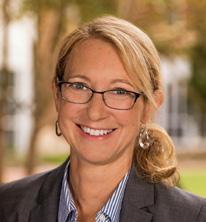
• Interpretation of Diagnostic Tests for Infectious Diseases
• Antimicrobial Use Guidelines: Why, When, and How Much*
• Pathogen Soup: Update on Canine Infectious Respiratory Disease
• A Shifting Spirochetosis: Renewed Approaches to Leptospirosis
• Frustrating Fungi: Update on Diagnosis and Treatment of Deep Mycoses
• Pets, SARS-CoV-2, and COVID-19: What All Veterinarians Need to Know


Immune-Mediated Diseases
Dana LeVine, DVM, Ph.D., DACVIM (SAIM) Austin Viall, DVM, MS, DACVP
• Diagnostic Dilemmas in Canine Immune-Mediated Hemolytic Anemia
• Immune-Mediated Hemolytic Anemia—Treatment Time!
• Highlights of the 2022 ACVIM Consensus Statement on the Diagnosis and Treatment of Immune Thrombocytopenia in Dogs and Cats
• Hemostatic Hurdles
Hurry! The CVMA Spring Seminar sells out every year, and spots are limited. Unable to join us in-person? For the first time, the Spring Seminar will also be offered in a live and interactive online format!
VM A WORLD-CLASS CE IN THE GREAT OUTDOORS
Visit cvma.net for full course descriptions and to register. SECURE YOUR ATTENDANCE NOW BY VISITING THE LEARNING TAB AT CVMA.NET OR CALLING 800.655.2862.
SPONSORED BY:
*This course satisfies the one hour of California CE requirement on the judicious use of medically important antimicrobial drugs.
View this issue of the California Veterinarian online at cvma.net. 15
S P E A K E R S
Veterinary Medical Board (VMB) Report
The California Veterinary Medical Board (VMB) and its Multidisciplinary Advisory Committee (MDC) convened on October 19–20, 2022 at the VMB’s Sacramento offices. CVMA Executive Director Dan Baxter, Director of Regulatory Affairs Dr. Grant Miller, and registered veterinary technician (RVT) liaison Nicole Dickerson attended the meetings on behalf of the CVMA. The following items were discussed:
VMB REPORT
The VMB elected Dr. Christina Bradbury as its next president. Dr. Bradbury is board-certified in internal medicine and works in private practice in Northern California. The VMB also elected Dr. Maria Solacito as the next VMB vice president. Dr. Solacito is the senior shelter veterinarian for the Los Angeles County Department of Animal Care and Control. Dr. Bradbury and Dr. Solacito’s terms will commence on January 1, 2023.
The VMB discussed a rulemaking package for RVTs that includes provisions for tasks that can be completed by students during the course of their education as well as numerous revisions to the RVT alternate route regulations. The VMB extensively debated the proposed language and ultimately split the rulemaking package so that part of it will be returned to the MDC for more analysis and revision, while the remainder will move forward in the rulemaking process.
The VMB also voted to amend a proposed regulation on expanded citation and fine authority for the VMB’s Executive Officer. The VMB agreed with the CVMA’s request for amendments to clarifying the limits of the Executive Officer’s authority to issue citations and fines;
specifically, the VMB decided that the regulation should be amended to limit the most common category of citation and fines to acts “substantially related” to the practice of veterinary medicine. This proposed amendment will now proceed to review by the Office of Administrative Law and eventual public comment.
The VMB intends to introduce several legislative measures in 2022. They potentially include:
• Removing section 4836.2(c) from the California Business and Professions Code to eliminate ambiguity with a conflicting code section relating to Veterinary Assistant Controlled Substance Permits
• Amending California Business and Professions Code section 4846(b) to better clarify license verification requirements for applicants who currently hold licenses in other states
• Amending California Business and Professions Code section 4861 to revise the VMB Wellness Evaluation Committee’s participant requirements to allow for more flexibility in obtaining volunteers
MDC REPORT
The MDC appointed Leah Shufelt, RVT as the incoming committee chair and Dr. Richard Sullivan as the next vice chair. These terms will also commence on January 1, 2023.
The MDC made extensive revisions to the proposed veterinary compounding regulations. These regulations were instituted earlier this year but immediately required revisions due to feedback from licensees. The revisions made during this meeting mainly involved policies, procedures, record keeping, and labeling of drugs
compounded in veterinary premises. The regulatory package with proposed amendments will now be reviewed by the VMB’s members for approval.
A drug compounding guidance document is currently under development, which is intended to be made available to licensees to assist in regulatory compliance. The guidance document—which will also be submitted to the VMB for review—contains sample forms to document compounded drug formulations.
16 California Veterinarian • November–December 2022 cvma.net VMB Report | MDC Report
The next MDC/ VMB meetings are scheduled to take place in Sacramento and online on January 24–26, 2023.
New Laws for 2023
During the 2022 legislative session, California lawmakers passed several laws that will significantly impact the veterinary profession and the workplace. Below is a brief summary of some of the most impactful laws.
AB 1885 (Kalra) Cannabis and cannabis products: animals: veterinary medicine
This new law permits veterinarians to recommend cannabis within the context of a valid veterinarian-client-patient relationship (VCPR) for all species except horses and livestock. This authorization does not apply to situations in which the veterinarian is employed by or has a financial agreement with a cannabis licensee. The bill requires the Veterinary Medical Board (VMB) to adopt and post cannabis recommendation guidelines by January 1, 2024, and for the Bureau of Cannabis Control to adopt animal cannabis regulations no later than July 1, 2025. For more information about this bill, see the Legislative Wrap-Up on page 10.
SB 1162 (Limón) Employment: Salaries and Wages
This new law requires all employers to provide pay scale information to current employees for their job positions and to job applicants upon request. For employers with 15 or more employees, the pay scale information must automatically be posted for open job positions for hire. It also requires employers to maintain records of job titles and wage rate histories for each employee for the duration of their employment plus three years after the end of employment.
AB 1949 (Low) Employees: bereavement leave
This new law makes bereavement leave a protected leave of absence for all public employers and for private employers with five or more employees. Employees may take up to five days of bereavement leave upon the death of a family member, including a spouse, child, parent, sibling, grandparent, grandchild, domestic partner, or
parent-in-law. Bereavement leave may be unpaid, but employees can use their existing available leave (e.g., vacation, paid time off, sick leave, etc.). Employers can require documentation to support the leave, and the leave must be completed within three months of the family member’s death.
AB 1041 (Wicks) Employment: leave
This new law expands for whom an employee can take leave to care under both the California Family Rights Act (CFRA) and California’s paid sick leave law. It specifies that employees can take CFRA leave or paid sick leave to care for a “designated person.” In both instances, an employer may limit an employee to one designated person per 12-month period.
AB 2188 (Quirk) Discrimination in employment: use of cannabis
This new law prohibits employers from discriminating against a person in hiring, firing, or any term or condition of employment based on (1) cannabis use off the job and away from the workplace, or (2) the results of an employerrequired drug screening test that detects non-psychoactive cannabis metabolites in an employee’s hair, urine, blood, or other bodily fluids. AB 2188 specifically allows employers to prohibit employees from possessing, being impaired by, or using marijuana while on the job and to make employment decisions based on “pre-employment drug screening conducted through methods that do not screen for nonpsychoactive cannabis metabolites.”
AB 2693 (Reyes) COVID-19: exposure
This new law extends current COVID-19 workplace exposure notification requirements by employers to employees to January 1, 2024. The law now also permits employee notification to be in the form of a specified workplace posting.


Join us for the CVMA’s online seminar on “New Laws for 2023” on January 10 and 25, 2023 presented by Dan Baxter, CVMA Executive Director, and Dr. Grant Miller, CVMA Director of Regulatory Affairs. This course is free to all CVMA members, offers 1 CEU, and will cover new and important laws of which all employers and employees should take note moving forward. To register, visit the Learning tab at cvma.net or call 800.655.2862. 17 View this issue of the California Veterinarian online at cvma.net.
A Lens into Diversity, Equity, and Inclusion in the Veterinary Profession


Access to Care in Action: DEI Principles Used to Break Down Barriers to Care
By Kristin Jankowski, VMD, CCRP
The line at the Knights Landing One Health Clinic check-in table is five-folks deep. Maria* and her dog Trixie are next in line. Maria explains she’s been trying to get into our clinic for several months with Trixie but has been unsuccessful, so she thought she would try to see if she could walk in. She’s desperate to get Trixie spayed before she has any more heat cycles or unwanted pregnancies. One hour later, Trixie’s medical team—made up of a DVM student, a pre-vet student, and a volunteer veterinarian—worked to provide a full physical exam, collect and run a tableside heartworm test, administer Trixie’s rabies, leptospirosis, and distemper, adenovirus, and parvovirus vaccines, and send her home with parasite preventatives.
While the veterinary team was working with Maria and Trixie, Maria’s young son joined the group at the exam table. Conversations started up with the nursing student, who was also part of the care team. While Maria waited for Trixie’s heartworm medication and flea and tick preventatives to be filled, she mentioned to the nursing team that her son has early onset hypertension and she has not been able to acquire a blood pressure cuff his size to help monitor his medical
condition at home. The nursing team has cuffs to share, so they fit him with an appropriately sized cuff and explain to Maria how to use it at home. Before leaving for the day, Maria gets Trixie on the spay/neuter list through UC Davis’ Community Surgery service, and the veterinary students go over that process. They explain that they will happily shuttle Trixie back and forth from Knights Landing to the William R. Pritchard Veterinary Medical Teaching Hospital (VMTH) for her big day.
All of this happened before 10:00 AM on a hot Sunday morning in the rural town of Knights Landing, California. The team of veterinary and nursing students set up the makeshift medical clinic in a hunting lodge in the center of this small town. Knights Landing is located in a veterinary care desert, where there are no veterinarians or human medical clinics in town and only one bus—which doesn’t allow pets—runs per day to the neighboring town of Woodland. That means no access to health care for families who don’t own a car. One solution: a team of over 60 students from UC Davis School of Veterinary Medicine prepares for weeks, trucks in supplies, partners with undergraduates who can translate, and sets up in all sorts of weather
to help this community. Corporate partners and philanthropists also chip in to donate supplies and provide financial support. The Betty Irene Moore School of Nursing collaborates to provide human health services, and the UC Davis School of Medicine also supports the mission with a human health clinic five blocks down the road. The goal is to break down barriers to care and empower families to have choices about their own medical care and care options for their pet—to listen, share information, and create a warm and inclusive environment for health care for the whole family, no matter their primary language, immigration status, skin color, or financial situation.
This case is one of hundreds of which I’ve been lucky enough to be a part since starting a One Health Clinic in Delaware in 2017. The Delaware clinic was also created in a care desert, but it was in an urban location where clients also faced many barriers to care. In fact, I modeled One Health Delaware off of Knights Landing One Health Clinic when I discovered Knights Landing during my research and development process.
Perhaps you’ve read several articles about Diversity, Equity, and Inclusion (DEI), or you’ve become more aware
New Member Benefit 18 California Veterinarian • November–December 2022 cvma.net Unity
of the variety of barriers to care by reading Dr. Michael Blackwell’s most recent article in the California Veterinarian, but this is what Access to Care really looks like in action. The Centers for Disease Control and Prevention (CDC) state that “differences in social determinants of health contribute to the stark and persistent chronic disease disparities in the United States among racial, ethnic, and socioeconomic groups, systematically limiting opportunities for members of some groups to be healthy” (Braveman 2011, 2014). Awareness of this social justice issue in human medicine and how that
translates to veterinary medicine is an important connection, especially when PetSmart Charities estimates that 50 million pets in the U.S. do not receive veterinary care due to a variety of barriers to care.

It’s exciting that creative solutions are out there and both DEI and Access to Care principles are receiving local, regional, and national attention. Collaborations are growing across human and veterinary health educators as well as corporate partners, sheltering organizations, and public policy makers. I encourage you to take a small step to explore this amazing
field in our profession, push out of your comfort zone with study and self-reflection related to DEI and implicit bias, then jump in where you can. All of the outreach clinics at UC Davis need volunteer veterinarians and technicians. We welcome new graduates, seasoned practitioners, and everyone in between. Come for an hour or stay the whole day and enjoy the opportunity to renew your passion for helping others in need. If you’re interested, please feel free to contact me at kkjankowski@ucdavis.edu.
*All names have been changed for privacy purposes.
is a Health Sciences Assistant Clinical Professor of Small Animal Community Practice and the Access to Care Service Chief at UC Davis Veterinary Medical Teaching Hospital. She is also an affiliated faculty member of the UC Davis One Health Institute, the Faculty Director for the Knights Landing One Health Clinic, and a Faculty Co-Leader for Davis Pet Advocacy and Wellness Clinic. She graduated in 1994 with her DVM degree from the University of Pennsylvania School of Veterinary Medicine, completed her certification in canine rehabilitation through the University of Tennessee in 2014, and completed the Purdue University certificate program for Diversity and Inclusion in Veterinary Medicine in 2021.
Kristin Jankowski,
19 View this issue of the California Veterinarian online at cvma.net.
VMD, CCRP
CVMA 2022 ECONOMIC SURVEY REPORT—PART 1
The CVMA’s Economic Task Force was convened to study and report on economic trends facing the veterinary industry in California, particularly how they impact veterinarians (DVMs*) and registered veterinary technicians (RVTs). The Task Force first partnered with EMC Research in 2013 to conduct an online survey of California veterinary professionals and has conducted surveys every three years since to follow trends in the industry over time.
The fourth iteration of the survey was conducted in July and August of 2022 and received 1,333 total responses, including 923 responses from DVMs and 410 responses from RVTs. Responses from DVMs can be compared to the 2019, 2016, and
2013 studies conducted by EMC Research and the CVMA’s Economic Task Force, and responses from RVTs can be compared to the 2019 and 2016 studies.

These survey results, which are especially valuable as the first survey conducted since the onset of COVID-19, offer unique insights into California’s veterinary industry ranging from a detailed demographic overview of the population of DVMs and RVTs in California, to perspectives about hiring challenges and economic conditions. Detailed findings from the survey will appear in the next two issues of California Veterinarian. The complete executive summary of findings will be published in January 2023 on cvma.net.
This survey was administered and aggregated by EMC Research.

KEY FINDING:
DVMs and RVTs Report Higher Salaries, but Struggle with Hiring
In some ways, economic conditions have continued to improve compared to previous surveys. Practice owners surveyed reported higher gross revenue since 2019, and both DVMs and RVTs report higher salaries. More DVMs and RVTs also reported being provided benefits like vision insurance, dental insurance, or a 401(k) plan.
Despite these improvements in salary and benefits, the postCOVID hiring struggle reported in other industries appears to have become pervasive in the veterinary industry as well: more DVMs and RVTs than ever say their practice has had difficulty finding an adequate number of candidates for open positions.
Note on percentages: Due to rounding, percentages may not add up to exactly 100%.
*As used herein, “DVM” is shorthand for licensed veterinarians, recognizing that different schools use different designations for their veterinary degrees.
20 California Veterinarian • November–December 2022 cvma.net
Profile of DVM Survey Respondents
The 2022 survey represents a similar profile of DVM respondents from previous years, with small animal practices still making up nearly nine-inten respondents. This year’s respondents had the opportunity to indicate if they maintain a shelter-focused practice, with 3% of DVMs reporting a shelter practice. Half of all DVM respondents are employed as associates.
Age and Gender Among DVMs
Respondents were slightly older in 2022 than in previous years, with respondents under 40 making up 27% of this year’s survey compared to those under 40 making up 37% of respondents in 2019. Respondents 40 and over made up 72% of respondents this year compared to 62% percent in 2019, marking a continued trend: from 2016 to 2022, the percentage of respondents over 40 has increased 16 points from 56% to 72%. The gender breakdown of DVMs is consistent with previous years, with women making up 70% of respondents in 2022 compared to 70% in 2019.
Age Gender 2013 37% 63% 2016 31% 69% 2022 28% 70% 2019 29% 71% 7% 31% 21% 31% 9% 7% 36% 21% 27% 8% 7% 30% 24% 27% 10% 5% 22% 24% 35% 14% Under 30 30–39 40–49 50–64 65+ 2022 2019 2016 2013
Position Among DVMs Practice Type Among DVMs Position Among DVMs* 2022 2019 2016 2013 2022 2019 2016 2013 Owner Women Owner Men Small Animal Food Animal Equine Shelter Other Associate Men Associate Women 57% 88% * Multiple responses accepted 5% 4% 3% 43% 22% 78% 48% 88% 4% 5% 3% 52% 20% 78% 46% 89% 3% 4% 4% 52% 18% 80% 47% 84% 3% 5% 5% 3% 52% 18% 80% 10% Relief Worker/ Contract Worker 30% Practice Owner 12% Medical Director 4% Other 51% Employed Associate 21 View this issue of the California Veterinarian online at cvma.net. PROFILE OF DVM SURVEY RESPONDENTS
Profile of RVT Survey Respondents
Similar to the DVMs, RVTs overwhelmingly reported (at a rate of 83%) that they work at a practice that primarily cares for small animals, though this percentage was down slightly from 2019 (91%). RVTs were also given the opportunity to report working at a shelter, and a slightly higher percentage of RVTs (7%) than DVMs (3%) reported working at a shelter-focused practice. The percentage of RVTs reporting they work full time (82%) or part time (18%) has remained stable since 2019.
Gender Among RVTs
The gender breakdown among RVTs is identical to 2019. Ninety-two percent of RVTs surveyed are women, and 6% are men. As with DVMs, the RVT population was slightly older in the 2022 survey than in previous years. Forty-six percent of RVTs surveyed are under the age of 30—down from 18% in 2019—while the number of RVTs over 40 has increased to 51% from 41% in 2019.
Age Among RVTs
This shift marks a trend since the CVMA Economic Task Force’s first survey of RVTs with EMC Research in 2016, with the number of RVTs under 30 surveyed nearly halved from 2016 (23%) to 2022 (11%). Following this trend, the RVT workforce surveyed is more experienced than in years past. Only 24% of RVTs surveyed have been in the profession for fewer than five years, down from 30% in 2019 and almost halved from 2016, while a third now say they have been in practice for 11-20 years, up from 23% in 2019 and almost double the inaugural RVT survey in 2016.
Age Gender Full/Part Time Practice Type Years in Practice 2016 7% 92% 2016 86% Full Time 82% Full Time 82% Full Time Part Time 14% Part Time 18% Part Time 18% 2022 6% 92% 2022 2019 7% 92% 2019 23% 36% 22% 17% 1% 18% 39% 20% 21% 1% 11% 35% 27% 24% 2% Under 30 30–39 40–49 50–64 65+ 2019 2022 2016 2019 2022 2016 2019 2022 2016
Small Animal 0–5 years Food Animal 6–10 years Equine 11–20 years Shelter More than 20 years Other 95% 44% 27% 17% 12% 1% 4% 1% 91% 30% 28% 23% 18% 3% 5% 1% 83% 24% 23% 32% 21% 2% 7% 7% 1% California Veterinarian • November–December 2022 cvma.net 22 PROFILE OF RVT SURVEY RESPONDENTS
Gross Annual Revenue Among DVM Owners Profitability Over Time Among DVM Owners
Practice owners were asked to report the gross annual revenue for all locations of their practice in 2021. Consistent with previous surveys, the percentage of owners reporting less than $800,000 in revenue continues to decrease, dropping to 26% in 2022 from 34% in 2019, and down from 40% in the initial DVM survey in 2013. The share of owners reporting more than $2 million in annual revenue is up to 33% in 2022, from 26% in 2019. A small plurality of owners—37%—reported $800,000 to $2 million in revenue in 2022, which remains the most stable practice revenue range over the history of the survey.
Nearly two-thirds of practice owners (63%) reported that their practice’s profitability has increased over the last two years, a slight increase since 2019, showing continued increases over time—the number of owners reporting increased profits has almost doubled over the nine years since the first CVMA Economic Task Force survey among DVMs in 2013.
Less than $800k Increased $800k–$2M Stayed the same $2M or more Decreased 40% 36% 34% 37% 22% 27% 37% 50% 38% 37% 22% 13% 34% 57% 37% 32% 26% 11% 26% 63% 37% 27% 33% 10% 2022 2019 2016 2013 23 View this issue of the California Veterinarian online at cvma.net. PRACTICE REVENUE AND PROFITS
DVM Non-Owner Salary
DVM Owner Salary
RVT Salary
The increase in revenue appears to be accompanied by an increase in salaries across the board among both owner and non-owner DVMs. The percentage of non-owner DVMs who reported earning $80,000 per year or less has steadily decreased since the 2013 survey, and for the first time since the start of the survey, a plurality of non-owner DVMs (35%) now report making more than $160,000 per year, more than double the 15% who reported this income range in 2019.
DVM owners also report increasing salaries. As with non-owners, the lowest percentage of owner DVMs to date (8%) reported making less than $80,000 per year, while a plurality reported making $200,000 or more since 2019 (27% reporting in 2019), a number that has jumped to 40% DVM owners in 2022.
RVT salaries have also improved somewhat since the 2019 survey, though the most common range reported remains consistent with 39% of RVTs reporting an annual salary of $41,000 to $60,000 (similar to 38% in 2019, and 36% in 2016). However, 18% now report making between $61,000 and $80,000 (compared to 10% in 2019) and the number of RVTs reporting salaries over $80,000 has doubled from 4% in 2019 to 8% in 2022.
$0–$80k $0–$80k $0–$20k $81–$120k $21–$40k $121–$160k $41–$60k $161k–$200k $61k–$80k $200k+ $80k+ $81–$120k $121–$160k $160k+ 38% 27% 10% 44% 36% 7% 2% 9% 38% 38% 10% 4% 8% 24% 39% 18% 8% 22% 19% 11% 22% 23% 29% 15% 10% 23% 17% 20% 16% 11% 27% 8% 17% 15% 13% 40% 42% 12% 7% 27% 50% 15% 8% 17% 42% 24% 15% 12% 23% 27% 35% 2022 2019 2016 2013 2022 2019 2016 2013 2022 2019 2016 24 California Veterinarian • November–December 2022 cvma.net SALARIES
While half of DVMs reported that their practice had hired a DVM in the last twelve months, that number is down slightly from 56% of DVMs who reported such a hiring in the last twelve months in 2019. The likelihood that respondents’ practices would hire a DVM in the next twelve months remains fairly stable, however, with 52% saying yes in 2022 compared to 50% saying yes in 2019.
a DVM
Hiring of DVMs in the Past 12 Months Likelihood to Hire
in the Next 12 Months
Yes, I have hired a DVM within the past 12 months.
46% 25% 51% 41% 56% 50% 51% 52% 2022 2019 2016 2013 2022 2019 2016 2013 25 View this issue of the California Veterinarian online at cvma.net. HIRING OF DVMs
Yes, I am likely to hire a DVM within the next 12 months.
Hiring of RVTs in the Past 12 Months
Likelihood to Hire an RVT in the Next 12 Months
Yes, I have hired an RVT within the past 12 months.
Yes, I am likely to hire an RVT within the next 12 months.
RVT hiring has remained more consistent. Three-quarters (77%) of surveyed RVTs say that their practice has hired RVTs in the last twelve months, identical to the percentage reported in 2019. The number of RVTs who say their practice is likely to hire an RVT in the next twelve months has also increased slightly, up to 74% in 2022 from 69% in 2019.
ATTITUDES TOWARD HIRING
Attitudes Toward Hiring Among DVMs
In recent hiring decisions, our practice has had difficulty finding an adequate number of qualified candidates interested in our open positions.
In recent hiring decisions, our practice has had difficulty finding an adequate number of qualified candidates interested in our open positions.
Despite the hiring statistics reported above, more DVMs and RVTs than ever are also reporting that it is difficult to find candidates for open positions. We first began asking about hiring attitudes in 2019, and RVTs have consistently reported more difficulty hiring than DVMs. The percentage of DVMs reporting difficulty finding candidates for open roles has increased 11% since 2019, from 73% to 84%, while nearly nine-in-ten RVTs now report difficulty finding candidates for open roles, up from 81% in 2019.
2016 2022 2019
Attitudes Toward Hiring Among RVTs
73% 81% 84% 89% 2016 2022 2019 2022 2019 2022 2019
74% 66% 77% 69% 77% 74% 26 California Veterinarian • November–December 2022 cvma.net HIRING OF RVTs
Optimism about both the industry at large and the ability to make a good living in the industry has shifted since our previous survey in 2019. While DVMs overwhelmingly remain confident in their ability to make a good living in the veterinary field (77% in 2022, improved from 71% in 2019), they are less optimistic about the industry as a whole. While half of surveyed DVMs reported feeling optimistic in 2019, roughly four-in-ten DVMs reported feeling optimistic in 2022. RVTs are less confident both in their ability to make a good living—down to 23% in 2022 from 29% in 2019—and their optimism about the industry as a whole is in line with DVMs, down to 41% in 2022 from 54% in 2019.
Attitudes Toward Veterinarian Jobs in California (Among DVMs)
I am optimistic about the future of the veterinary profession.
I am confident I will be able to make a good living in the veterinary profession.
Attitudes Toward RVT Jobs in California (Among RVTs)
I am optimistic about the future of the registered veterinary technician profession.
I am confident I will be able to make a good living in the veterinary profession.
2022 2019 2022 2019 51% 54% 71% 29% 43% 41% 77% 23% 27 View this issue of the California Veterinarian online at cvma.net. OUTLOOK






A Conference of the California Veterinary Medical Association Plan your Vetcation! June 9–12, 2023 Long Beach Convention Center | Long Beach, CA 20 23 PacVet California Veterinarian • November–December 2022 cvma.net 28
Keynote Presentation
Kwane Stewart, DVM
The Power of Giving Back: How WE Hold This Unique Gift!
SPONSORED BY:
Small Animal Surgery
Ingrid Balsa, MEd, DVM, DACVS-SA
Topic: Soft Tissue Surgery/ Minimally Invasive Surgery
Michael Jaffe, DVM, MS, CCRP, DACVS






Topic: Rehabilitation
Anna Massie, DVM, DACVS-SA
Topic: Orthopedic Surgery
Diversity, Equity, and Inclusion
Suzie Kovacs, MsC, Ph.D.
Topic: Diversity, Equity, and Inclusion
Hobby Animal
Andrea Mongini, DVM, MS (Nutrition)

Topic: Small Ruminants
Shelter Medicine
Cynthia Delany, DVM, KPA-CTP, FFCP
Topic: Behavior/Training Bootcamp
Cristie Kamiya, DVM, MBA
Topic: ASV Guidelines/
Updates, Spay Neuter Tips, Access to Care
BY:
Small Animal Medicine
Kenneth Abrams, DVM, DACVO
Topic: Ophthalmology
Dawn Boothe, DVM, MS, Ph.D., DACVIM, DACVCP

Topic: Pharmacology
JD Foster, VMD, DACVIM (SAIM)
Topic: Nephrology/Urology
John Rush, MS, DVM, DACVIM, DACVECC
Topic: Cardiology
Katie Tolbert, DVM, Ph.D., DACVIM (SAIM)
Topic: Gastroenterology
Andrew Woolcock, DVM, DACVIM (SAIM)
Topic: Immune-Mediated Diseases
Speaker 7
TBA
Topic: TBA
Speaker 8
TBA
Topic: TBA
Avian/Exotics
Heather Barron, DVM, DABVP (Avian)
Topic: Avian
Angela Lennox, DVM, DABVP-Avian, ECM, DECZM-Small Mammal Topic: Small Mammals



Teresa Morishita, DVM, Ph.D., DACPV Topic: Poultry, Game Birds, and Waterfowl





Wellness
Alex Miller, VMD, MS, CCFP

Topic: Walk the Walk: WellBeing and Fulfillment Through Knowledge and Action
Equine
Speakers TBD
Practice Management
Louise Dunn, CEO, Snowgoose Veterinary Management Consulting

Topic: HR and Finance
Jason Eldred, Wilke Fleury LLP


Topic: Meal and Rest Breaks
Jizell Lopez, Wilke Fleury LLP


Topic: Medical Leaves
Stephen Marmaduke, Wilke Fleury LLP

Topic: Cannabis –Current Law
Monica Perry Dixon, CVPM
Topic: Communications, Team Motivation, Recruitment, and Inventory
Robert Sanchez, CEO, Digital Empathy
Topic: Marketing and Building Client Relationships
Technician
Sandy Gregory, RVT, MEd, VTS (Physical Rehabilitation), CCRA






Topic: Physical Rehabilitation
Vicky Ograin, MBA, RVT, VTS (Nutrition)
Topic: Nutrition
Liza Rudolph, BAS, RVT, VTS (CP-CF) (SAIM)
Topic: General Practice
Courtney Waxman, MS, CVT, RVT, VTS (ECC)
Topic: Emergency Critical Care – Recover
Integrative Medicine
Trina Hazzah, DVM, DACVIM (Oncology), CVCH
Topic: Cannabis and Cancer
Sponsored Symposia
OMNI PRACTICE GROUP SYMPOSIUM
Rodney Johnston, MBA, CMA
Topic: Practice Transition
Visit PacVet.net for confirmed speaker updates and full course descriptions.
29 Visit the Pacific Veterinary Conference online at PacVet.net 2023 SPEAKERS AND TOPICS as of October 27, 2022
SPONSORED
VISC CareCredit Boehringer Ingelheim
YThank ou
TO OUR CONFERENCE SPONSORS!
Vet Expo 2023 Early Registered Exhibitors as of October 21, 2022
Our exhibitors are trusted industry partners who generously support the conference. Their contributions lower conference costs, which are savings passed onto our attendees. Be sure to visit their booths at the Vet Expo and check out their websites at PacVet.net.
Advanced Monitors
American Regent Animal Health
AmeriVet Veterinary Partners
Avid Identification System, Inc.
Banfield Pet Hospital
Bank of America Practice Solutions
BCP Veterinary Pharmacy
Blue Natural Veterinary Diet
Boehinger Ingelheim Animal Health
California Veterinary Medical Association

California Veterinary Medical Foundation
California Veterinary Medical Reserve Corps

Capstone Financial Group
CareCredit
Doctor Multimedia
Dragon Veterinary Canada Ltd
Edge Life Technologies, LLC

Elanco Animal Health
Epicur Pharma
Esaote North America
ezyVet
GlobalVetLink
Golden Pet RX
Hill’s Pet Nutrition
JustFoodForDogs
KARL STORZ Veterinary Endoscopy
Lap of Love Veterinary Hospice
Live Oak Bank
Medical Illumination
Medical Pet Shirts International
Merck Animal Health
MiDOG LLC
Mixlab
Multi Radiance
MWI Animal Health
Nutramax Laboratories Veterinary Sciences, Inc.
Omni Practice Group
Pacific Professionals, Inc.
Pawlicy Advisor
PawPals
Pawprint Oxygen
PetVet Care Centers
Radiocat
rauhaus freedenfeld & associates (rfa)
Roo
Rose Micro Solutions
Samsung Veterinary Ultrasound
Sedecal USA, Inc
Simmons & Associates Pacific, Inc.
Solutions by Design, Inc.
Standard Process Inc.
Talkatoo
Tuttnauer USA
Universal Imaging
Veterinary Emergency Group
Veterinary Insurance Services Company (VISC)
Victor Medical Company
ViziSites
WEAVE
Wedgewood Pharmacy
West Coast Pet Memorial
Western Veterinary Partners
Zomedica
2023
SAPPHIRE EMERALD DIAMOND
SPONSORS AND EXHIBITORS
TOPAZ GlobalVetLink California Veterinarian • November–December 2022 cvma.net 30
Long Beach CE IN A VACATION DESTINATION!
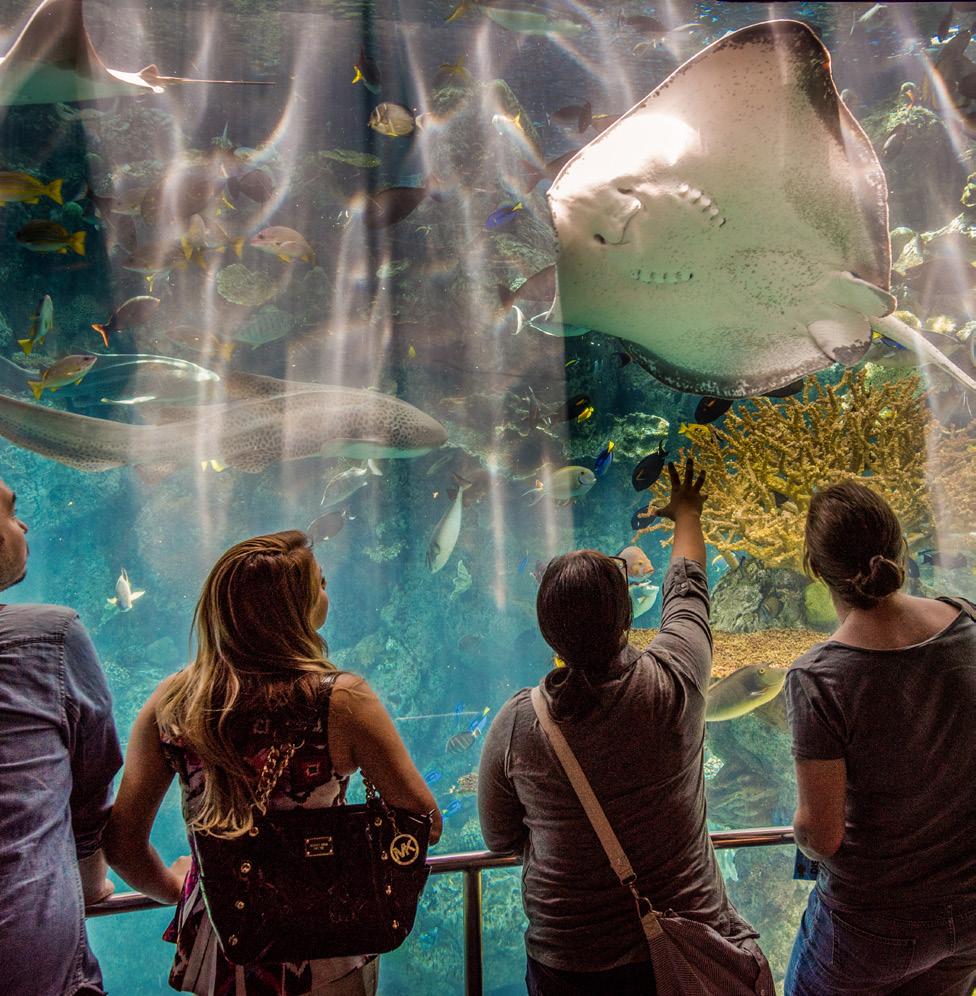
Time to learn—time to play
Long Beach is a waterfront playground with 11 miles of beach and something for everyone. Ride the waves, lounge in the sand, have a deep-sea adventure at the Aquarium of the Pacific, take a whale-watching excursion, enjoy some retail therapy, or tour the vibrant foodie scene. The options are endless!


31 Visit the Pacific Veterinary Conference online at PacVet.net
Con erence Highlights
Over 200 sessions in 15 tracks

California Veterinarian • November–December 2022 cvma.net 32
Labs and Symposia
Two-Day Vet Expo
Discover the latest veterinary products and services and enjoy lunch on us!
CVMA Awards and Installation
Ceremony and President’s Reception
Celebrate the achievements of your colleagues and join us in welcoming the 2023–2024 CVMA President, Dr. Michael Karle.
Alumni Receptions
Catch up with UC Davis and WesternU alumni over appetizers and a no-host bar.
Technician Fair
RVTs and veterinary assistants can visit with industry partners and NAVTA-approved academics and societies while enjoying appetizers, a no-host bar, and raffles.
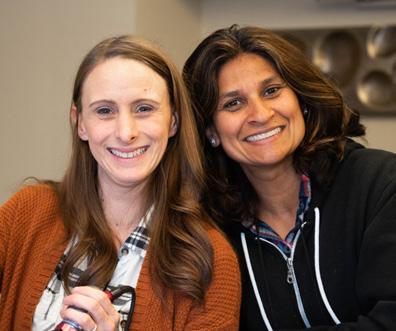

Rabies Titer Testing
Phlebotomists will be onsite to collect serum samples from previously immunized veterinarians and their staff.
Raffles, Raffles, Raffles
Don’t miss your chance to win valuable prizes!
Continental Breakfast Served Daily
Student Posters
UC Davis and WesternU students will share their poster presentations and answer questions about their exciting research.
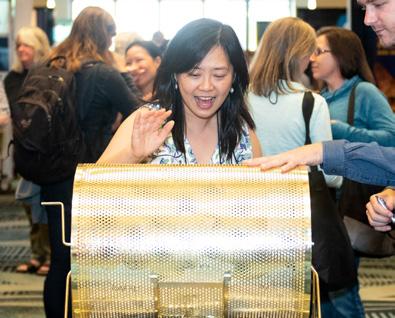
Keynote Presentation
Kwane Stewart, DVM
The Power of Giving Back: How WE Hold This Unique Gift!

33 Visit the Pacific Veterinary Conference online at PacVet.net
SPONSORED BY:
CONFERENCE HOTEL AND VENUE
The Pacific Veterinary Conference will be held at the Long Beach Convention Center. Conveniently located in the heart of downtown Long Beach, the Convention Center is within walking distance of attractions like the Pike at Rainbow Harbor, the Aquarium of the Pacific, beaches, fine dining, shopping, and much more!
Airports
• Long Beach Airport lgb.org
• Los Angeles International Airport flylax.com
• John Wayne Airport Orange County
ocair.com
Rental Cars
Visit PacVet.net for CVMA member car rental discounts for:
• AVIS
• Budget
Ridesharing
Available in this area:
• Uber
• Lyft
Venue
Long Beach Convention Center
100 South Pine Avenue
Long Beach, CA 90802
Host Hotel
Hyatt Regency Long Beach 200 South Pine Avenue | Long Beach, CA 90802 Phone: 562.491.1234 | Reservations: 877.803.7534


Online Hotel Reservations
Visit PacVet.net to make your hotel accommodations.
Discounted * Room Rate $239 per night plus tax, until May 22, 2023
*Discounted rate available until the deadline or until the block fills up—whichever comes first

California Veterinarian • November–December 2022 cvma.net 34
FOR THE 2023 PACIFIC VETERINARY CONFERENCE
THREE WAYS TO REGISTER
FULL CONFERENCE REGISTRATION
Full conference registration for veterinarians, practice managers, veterinary technicians, and veterinary staff includes:
• CE sessions
• Vet Expo admission
• Continental breakfast (all four days)
• Complimentary lunches and breaks in the Vet Expo (Saturday and Sunday)
• Coffee breaks
• Evening events
• Conference bag
• Conference app
• Access to all lecture notes on PacVet.net and the mobile app
Go to PacVet.net for information on:
• Staff group registration
• Discount practice team registration
• Sponsoring a student
• Guest badges
• Cancellation policy
• Exhibit hall-only registration
Registration
Deadlines
February 24, 2023
Super Early-Bird Deadline FOR THE GREATEST SAVINGS!
March 27, 2023
Early-Bird Deadline
May 22, 2023
Advanced Registration Deadline
Packet Pick-Up for Pre-Registered Attendees
Thursday, June 8, 2023
5:00pm–6:30pm
Vet Expo
Saturday, June 10, 2023
Sunday, June 11, 2023

CE Sessions
June 9–12, 2023
Register Online The quick and easy way to register and pay by credit card! Visit PacVet.net.
out the registration form on the next page and mail or fax to us with payment. Call 800.655.2862
Mail Fill
DATES TO REMEMBER Super
accesses up to $100 in savings based on onsite veterinarian full conference registration! 20 23 PacVet 35 Visit the Pacific Veterinary Conference online at PacVet.net
early-bird registration (available through February 24, 2023)
CVMA Member: m Yes m No
In-Person Conference Registration Form
June 9-12, 2023 • Long Beach, California
Advance registration ends May 22!
To register as a virtual attendee, visit PacVet.net.

Do you want us to use this information to update your CVMA profile? m Yes m No
Please check one: m DVM m VMD m RVT m CVT m LVT m Practice Manager m Veterinary Staff m Other
Attendee Name:
Company/Practice:
Mailing Address: m Work m Home City/State/ZIP:
Phone: Fax:
Email:
School: Year Graduated:
CVMA Members by by by Full Registration Feb. 24
Students by by by Full Registration Feb. 24 Mar. 27 May. 22 Onsite
m DVM Student (includes 2023 graduates) $145 $155 $165 $175
m RVT Student $145 $155 $165 $175
Sponsor a Student (Must be sponsored by DVM)
m RVT m DVM $145 $155 $165 $175
Sponsor Name:
Sponsor E-mail:
Sponsor Phone: G roup/Team
m Staff Group $790
Available to any group of four non-veterinarian staff from the same practice who will be attending the conference. One attendee per day, one payment must be made for entire group.
(Please identify name and email for each staff member on chosen day.)
Fri. June 9
Sat. June 10
Sun. June 11
Mon. June 12
Name/Designation E-mail
Name/Designation E-mail
Name/Designation E-mail
Name/Designation
m Discount Practice Team (Please identify name and email for each staff member below)
One CVMA-member veterinarian and a minimum of two additional registrants from the same practice receive a 10% discount on their full conference registration. Every registrant gets the discount.
CVMA Member:
CVMA Distinguished Life Members
Please call the CVMA office at 800.655.2862 for complimentary registration.
Name/Designation
Name/Designation
California Veterinarian • November–December 2022 cvma.net 36
Page 1 of 2
E-mail
CVMA Member Name CVMA Member E-mail
E-mail
E-mail
Mar. 27 May 22 Onsite m Veterinarian $515 $545 $585 $685 m Veterinarian Grads (‘19-’22) $415 $440 $460 $485 m RVT/CVT/LVT $405 $420 $440 $465 m Veterinary Hospital Staff $405 $420 $440 $465 m Practice Manager $405 $420 $440 $465 Daily Registration (identify which day: m Fri m Sat mSun mMon) m Veterinarian $265 $280 $300 $315 m Veterinarian Grads (‘19-’22) $215 $230 $240 $250 m RVT/CVT/LVT $205 $220 $230 $235 m Veterinary Hospital Staff $205 $220 $230 $235 m Practice Manager $205 $220 $230 $235 Non-Members by by by Full Registration Feb. 24 Mar. 27 May 22 Onsite m Veterinarian $625 $655 $695 $725 m Veterinarian Grads (‘19-’22) $510 $535 $555 $580 m RVT/CVT/LVT $490 $505 $525 $550 m Veterinary Hospital Staff $490 $505 $525 $550 m Practice Manager $490 $505 $525 $550 Daily Registration (identify which day: mFri mSat mSun mMon) m Veterinarian $325 $340 $360 $375 m Veterinarian Grads (‘19-’22) $265 $280 $290 $300 m RVT/CVT/LVT $255 $270 $280 $285 m Veterinary Hospital Staff $255 $270 $280 $285 m Practice Manager $255 $270 $280 $285
In-Person Attendee Name:
Special Fee Events
Saturday, June 10, 2023
*Rabies Titer Testing
*Must pre-register, space is limited
Exhibit Hall Only Registration
Veterinary professionals only
The exhibit hall only registration is limited to veterinarians, veterinary technicians, practice managers, and hospital staff who would like to attend the exhibit hall to meet with exhibitors but are not registered for PacVet 2023. This registration does not allow access to CE sessions or any other events outside the exhibit hall. The purchase of lecture notes on the flash drive is not available with this registration. This registration is not available to industry suppliers including PacVet exhibitors.
CVMA Member
NonMember
m Saturday $100 $150
m Sunday $100 $150
Guests (Non-veterinary professionals only)
Only registered attendees may purchase a guest(s) badge(s) for non-veterinary professional(s) to access the Vet Expo. Guest badges do not include food events in the Vet Expo nor permit entry into CE sessions. Meal tickets must be purchased separately. Industry suppliers and PacVet exhibitors may not purchase guest badge(s).
m Guest Badge @ $40 ea. $
m Continental Breakfast for guest(s) @ $35/day $
m Lunch (Saturday/Sunday) for guest(s) @ $55/day $
Guest Name(s) Required:
Additional Items
Lecture Notes Flash Drive
PacVet Logo T-shirts
@ $15 ea. $ $ @ $15 ea.
Tax Included
Women Sizes mSmall mMedium mLarge mXL mXXL
Men Sizes mSmall mMedium mLarge mXL mXXL
Purchased t-shirts will be available for pickup with your registration packet.
Cancellation/Refund Policy
All cancellation requests must be made in writing and submitted by email at info@PacVet.net or via fax at 916.646.9156 to the Meetings & Events Department no later than April 28, 2023. There will be a $50 non-refundable processing fee for all paid conference registration cancellations and a $10 nonrefundable processing fee for all guest badge cancellations. For lab cancellations, a $75 non-refundable processing fee will be assessed. A full refund on lab fees will be provided by PacVet should a lab cancel due to inadequate enrollment. Refunds due will be paid no later than 45 days after the close of the conference. No refund will be issued for cancellations or registrations received after April 28, 2023. Please note that cancelling your registration does not cancel your hotel and/or travel arrangements. You are responsible for cancelling your own hotel and travel reservations.
If you have any changes or additions to this form after submission, please call us at 800.655.2862.
Please enter the subtotals from each applicable section below.
By registering for the 2023 Pacific Veterinary Conference, I agree to the rules and regulations of this conference. For complete rules and regulations, visit PacVet.net.
General Information
Payments
Mail completed form along with check or credit card payment to: Pacific Veterinary Conference, 1400 River Park Drive, Suite 150, Sacramento, CA 95815 or fax to 916.646.9156. You may also register online at www.PacVet.net or by phone at 800.655.2862.
Health and Safety Protocols
Visit PacVet.net for the most current health and safety protocols.
Badge Policy
All registered attendees and exhibitors must wear their badge during all sessions, events, and in the Vet Expo. Your name badge will be included in your registration packet, available upon arrival at the conference. Please note that there will be a $25 fee for replacement badges.
For full terms and conditions, visit pacvet.net.
To register as a virtual attendee, visit pacvet.net.
37 Visit the Pacific Veterinary Conference online at PacVet.net Page 2 of 2
Fees
Full In-Person Conference Registration $ One-day In-Person Registration $ Sponsor a Student $ Staff Group Registration $ Discount Practice Team Registration - 10% ( ) Exhibit Hall Only $ Guest(s) Badges $ Guest(s) Breakfast/Lunch Tickets $ Rabies Titer Testing $ Lecture Notes Flash Drive $ PacVet Logo T-shirt $ TOTAL DUE $ Payment
check for $ Charge my VISA/MasterCard/Discover/AMEX $ Credit Card Number Expiration Date CVV Code
Name Cardholder Signature
Enclosed is a
Cardholder
$100
$
@
ea.
Small Animal Physical Therapy and Rehabilitation
By Michael Jaffe, DVM, MS, CCRP, DACVS | Pacific Veterinary Conference Speaker
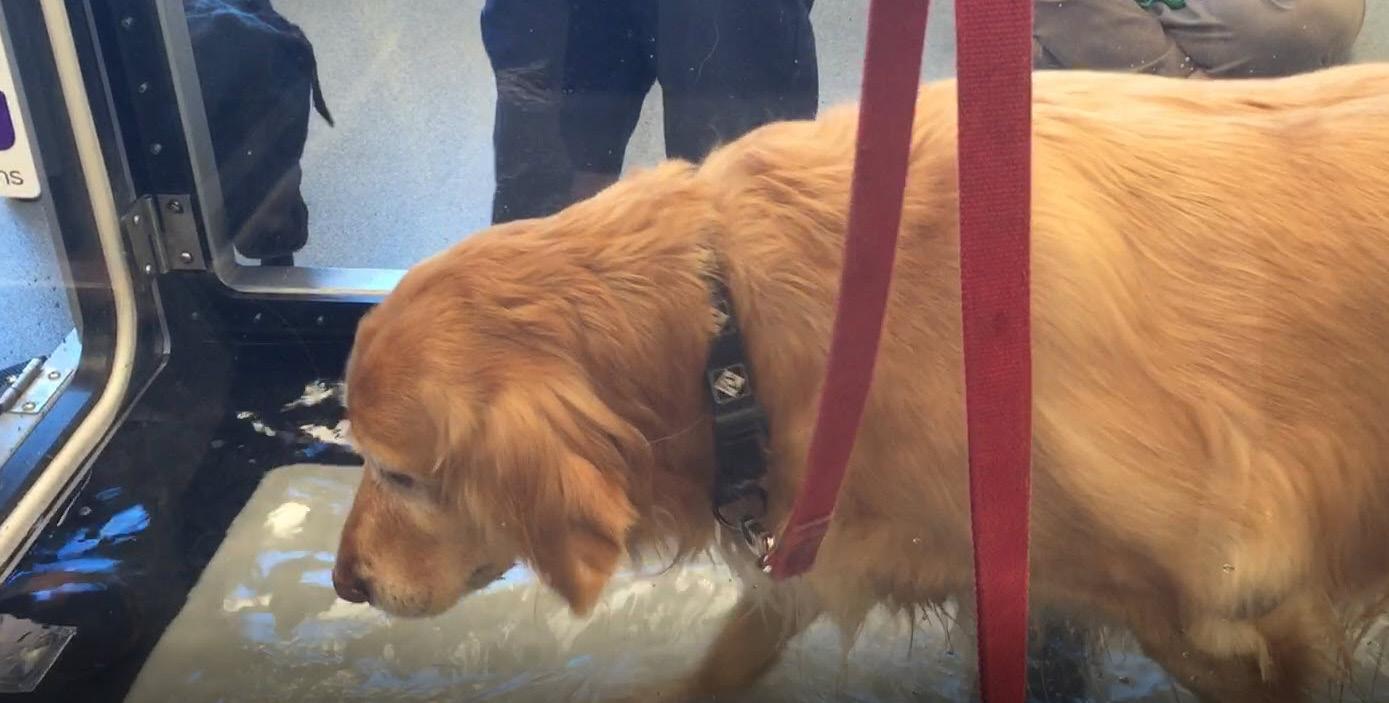

Historically, small animal practitioners have paid little attention to the need for rehabilitation therapy for sick and injured patients. Patients who recover from long-term illnesses, surgeries, and injuries who undergo physical therapy (PT)/rehab have demonstrated significantly improved outcomes in return to normal activity and function. The necessity of PT/rehab should not be limited to patients with orthopedic or neurologic injuries; indeed patients with illnesses requiring prolonged hospitalization and cage rest also benefit greatly from rehab techniques, as do patients with osteoarthritis and those who are overweight.
Physical therapy in people recovering from injuries or surgery usually is assumed. Similarly, in canines who undergo orthopedic surgeries, rehabilitation has been shown to have the following beneficial effects:
• Increased speed of recovery
• Increased muscle endurance and strength
• Improved joint flexibility
• Reduced pain
• Improved quality of life
Many other benefits exist, and in general, the result is a healthier patient and happier client.
Patients who are crate-rested or immobilized due to chronic injury, or those kept in a bandage/splint/ cast long-term, undergo generalized disuse atrophy of their muscles. Loss of strength in some cases may be rapid in the initial week, but atrophy continues to gradually progress. Fortunately, this atrophy can be slowed or reversed with rehabilitation
exercises and treatments. Neurogenic atrophy in patients with neurologic injuries can occur more rapidly; these patients can therefore benefit greatly from more aggressive therapy.
For patients immobilized in a cast or splint, changes to soft tissue structures—such as ligaments and tendons—undergo changes resulting in loss of mobility due to stiffness of these soft tissue structures. Longterm immobilization of a bone may lead to stress-shielding, which may reduce bone density, resulting in osteopenia. This is generally more pronounced in younger patients. Light exercise that provides some loading to the bone will improve bone mass and density, reducing the progression of osteopenia.
Remobilization of a patient who recovers from injury is a slow process, often lasting twice as long as the period of immobilization. The rehabilitation plan for a patient needs to be designed specifically for the
patient and the injury being treated. Rehabilitation techniques should stress two processes:
• Endurance training
• Strength training
There are many techniques and modalities that can be incorporated into the rehab plan. Many of these can be easily performed by clients at home, while others will need the services of a rehab specialist.
Techniques that can be performed by owners include:
• Cryotherapy/thermotherapy
• Range of motion exercises
• Massage therapy
• Controlled exercises
• Strengthening exercises
It is important to teach owners the correct way to perform these exercises to gain maximal benefits and not cause injuries.
38 California Veterinarian • November–December 2022 cvma.net PacVet Speaker
A canine patient works on an underwater treadmill as she recovers from orthopedic surgery.
In addition to the rehab activities themselves, other forms of treatment are important. In general, cold compresses are used to reduce acute inflammation. Ice packs are most useful in the first 48 hours after an injury. Ice reduces heat and inflammation, reduces pain, causes vasoconstriction that decreases edema formation, and decreases muscle spasms. Warm compresses should be used after 48 hours following injury to increase metabolic rate of tissue, provide pain relief due to a counterirritant effect, improve nerve conduction, and decrease stiffness of joints and soft tissue.
Passive range of motion (PROM) reduces and prevents tendon and muscle adhesions, protects damaged ligaments and tendons from adverse stress, and increases tensile strength of muscles. In general, PROM should be performed singly on each individual joint. It is best to work each individual joint slowly rather than the entire limb as a unit. Low cyclic loads should be applied and increased frequency,
duration, and magnitude through each isolated joint should be performed. Warm compresses to loosen up muscles may be applied preexercise, and post-exercise cold compresses to joints and muscle may soothe the injured tissue and reduce pain and inflammation.
Massage therapy has benefits in loosening up sore and tight muscles, improving blood and lymphatic flow of tissues, and reducing muscle adhesions. Massage of tissue should begin lightly and progressively increase (as allowed by the patient) to deeper tissue manipulation. Massage before and after exercise is helpful to improve muscle performance and recovery.
Endurance building exercises include walking and swimming. Controlled exercise includes SLOW leash walks that increase in duration, distance, and speed over time. Dogs should be kept on a very short leash and only walked at the same speed as the owner walks. Swimming is a great exercise as it is non-weight bearing.
Owners may wish to swim with their dog to decrease anxiety. Dog vests can be purchased as needed. (Obviously, dogs who have a phobia of swimming should not be forced to do so; in such cases, other forms of exercise are indicated.)
Strengthening exercises include stair/hill walking and balance exercises. Slow hill walking and stair climbing while supported with a harness, sling, and leash can be performed to build leg strength, but must be done with owner support as injury may occur. In general, higher intensity strengthening exercises are begun once healing is well underway.
Modalities incorporated by professional rehabilitation therapists include:
• Underwater and land treadmill
• Therapeutic laser
• Therapeutic ultrasound
• Extracorporeal shockwave therapy
• Electrotherapy
• Pulsed magnetic therapy
These modalities are designed to improve penetration of heat to deeper tissues (ultrasound), increase cellular activity for tissue repair (laser, shockwave, and magnetic therapies), endurance and strength building (treadmills), and nerve and muscle stimulation (electrotherapy).
There is no cookbook for rehabilitation therapy. Each patient must be assessed and re-assessed individually,
and a plan for recovery must be formulated based on their injury, how the patient is recovering, and goals for the patient. Clients must be counseled on how to correctly perform techniques and when to stop or reduce exercises, and should additionally be advised that recovery in every patient occurs at different rates and may be prolonged in some cases.
The focus of Dr. Jaffe’s presentations at the 2023 Pacific Veterinary Conference will be on small animal surgery –rehabilitation. Join us in Long Beach on June 9–12, 2023 to attend Dr. Jaffe’s lectures and those of dozens of other speakers.
Dr. Michael Jaffe earned his DVM degree from the University of Missouri College of Veterinary Medicine and his Master’s degree from Louisiana State University. Dr. Jaffe practiced for 17 years in specialty surgical practices, and is currently an associate professor of small animal surgery and service chief of small animal surgery at Mississippi State University College of Veterinary Medicine. He became a Diplomate of the American College of Veterinary Surgeons in 2002 and a Certified Canine Rehabilitation Practitioner in 2017.

Visit the Pacific Veterinary Conference online at PacVet.net 39
A rehab patient performs balance and muscle shifting exercises for strengthening muscles following orthopedic surgery.
Highly Pathogenic Avian Influenza Found in California

Highly Pathogenic Avian Influenza (HPAI) has been detected in California in both wild bird populations and domestic poultry. As of October 25, 2022, detections of HPAI Eurasian H5N1 in wild birds have been reported in 30 California counties (Alameda, Butte, Colusa, El Dorado, Fresno, Glenn, Lassen, Los Angeles, Marin, Mendocino, Monterey, Napa, Orange, Placer, Plumas, Riverside, Sacramento, San Benito, San Diego, San Francisco, San Luis Obispo, San Mateo, Santa Clara, Santa Cruz, Siskiyou, Solano, Sonoma, Stanislaus, Trinity, and Yolo), affecting 18 unique species (American crow, American white pelican, black-crowned night heron, brown pelican, Cooper’s hawk, double-crested cormorant, multiple ducks [mallard, Muscovy, and wood], great horned owl, multiple geese [Canada, greater white-fronted], Western gull, multiple swans [black, mute] peregrine falcon, red-tailed hawk, and turkey vulture). Additionally, there have been 21 California domestic flocks affected (13 commercial, eight backyard) in 10 counties: Butte, Calaveras, Contra Costa, Del Norte, El Dorado, Fresno, Monterey, Sacramento, Stanislaus, and Tuolumne.
Across the country, as of October 25, 2022, H5N1 has been detected in 43 states, with 237 commercial flocks, 308 backyard flocks, and over 44 million domestic birds affected. Additionally, H5N1 has been detected in 3,072 wild birds across 45 states. It is estimated that
approximately 85% of domestic flocks were infected through wild bird introductions.
Since most infections of this virus have come through wild bird populations, all poultry—commercial and backyard—are at risk of becoming infected. Veterinarians are encouraged to remain vigilant for reports of owner concerns about sudden morbidity or mortality in backyard and commercial poultry or other avian species. Key clinical signs include:
• Difficulty breathing
• Clear, runny discharge from nose, mouth, and eyes
• Lethargy
• Decrease appetite and water consumption
• Swollen eyes, head, wattles, or combs
• Discoloration or bruised combs, wattles, or legs
• Stumbling, falling, or twisted neck
• Sudden death
Primary sources of infection include both direct exposure via droppings, bodily discharges, and feathers from infected birds, as well as indirect exposure via people spreading the virus via dirty equipment, shoes, clothes, hands, or from contaminated tires and/or vehicles.
CDFA 40 California Veterinarian • November–December 2022 cvma.net
By Mandy Murray, DVM, MPVM, Ph.D.; Andrea Mikolon DVM, MPVM, Ph.D.; Kimberly Conway DVM, MPVM; Felicia Pohl, CDFA Animal Health Branch
To prevent and mitigate the spread of disease, it is important that all owners, veterinarians, and clinics practice good, enhanced biosecurity by addressing some key risk factors for viral spread, including:
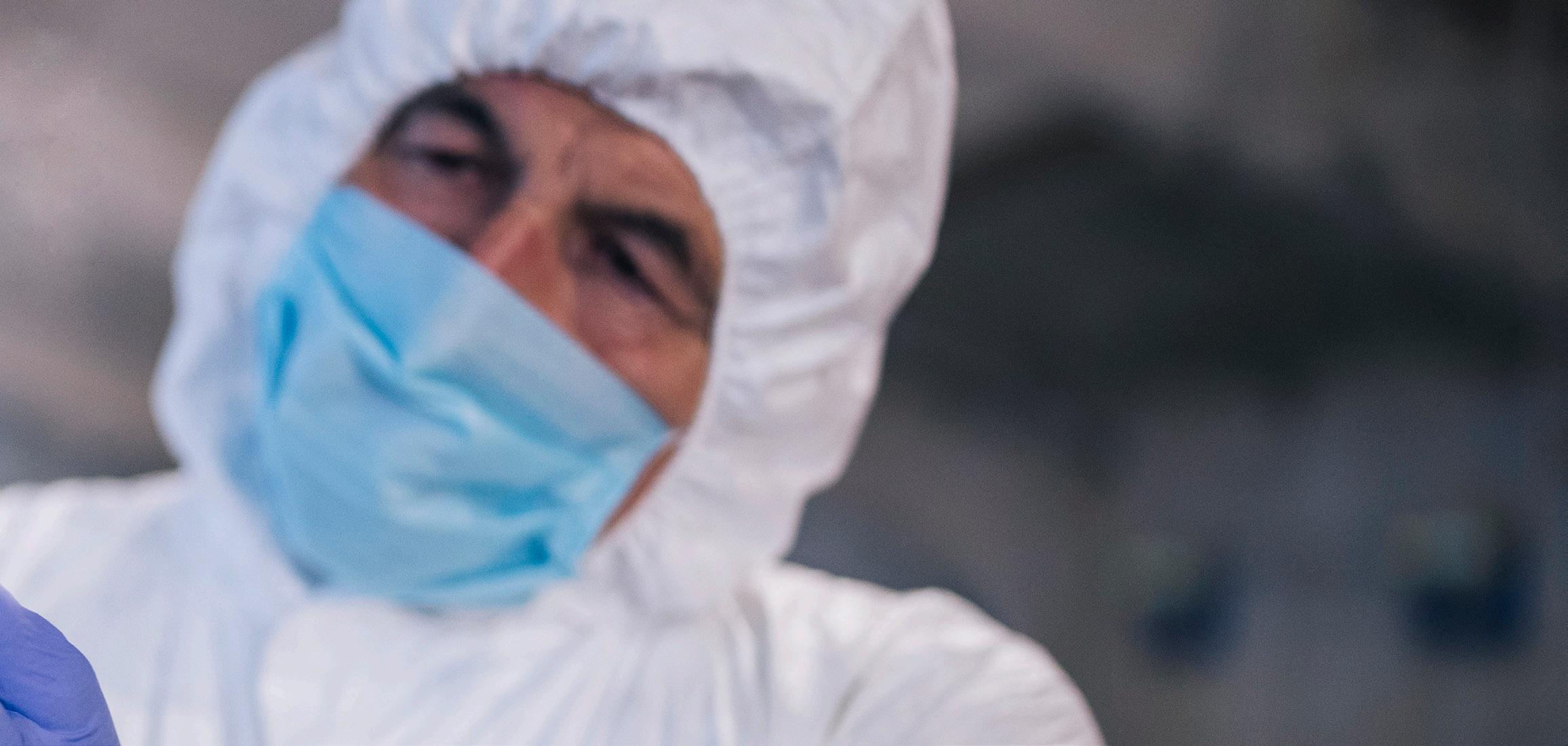
Limit exposure to wild birds
• Prevent contact between domestic and wild birds
• Bring birds into a covered enclosure
• Drain ponds on the property to avoid attracting wild birds
Minimize spread via fomites
• Clean and disinfect supplies between uses
• Wash and disinfect boots and equipment when moving between coops
• Wear dedicated clothing and footwear when working with birds
• Clean and disinfect shoes and vehicle tires after visiting feed stores and other places where poultry owners or wild birds visit
• Do not share equipment and supplies with neighbors
Minimize spread via other animals or environmental contamination
• Prevent rodents and predators from entering the coop
• Keep feed covered and spills cleaned up to avoid attracting wild birds and rodents
• Prevent pets like dogs and cats from eating wild dead birds
• Avoid visiting places like lakes and ponds, where wild birds congregate
The risk of zoonotic transmission of HPAI to humans is considered low. However, this HPAI strain, H5N1 2.3.4.4b clade, has been detected in multiple mammalian species, including red foxes, raccoons, striped skunks, bobcats, coyote, opossum, gray seals/harbor seals, and a dolphin in North America. It is believed that most of these mammals were infected from consuming infected dead birds.
For the latest updates and information on the current outbreak, go to the California Department of Food and Agriculture’s (CDFA) page on “Avian Influenza Updates” at cdfa.ca.gov, or visit aphis.usda.gov or the United States Department of Agriculture’s Animal and Plant Health Inspection Service’s page on “2022 Detections of Highly Pathogenic Avian Influenza.” To report an unusual number of sick or dead birds, contact the Animal Health Branch’s Sick Bird Hotline at 866.922.BIRD (2473). For a list of self-identified veterinarians who treat backyard poultry, visit ucanr.edu/sites/poultry/contact or search the CVMA’s Find a Veterinarian Directory under the Resources tab at cvma.net.
CDFA 41 View this issue of the California Veterinarian online at cvma.net.
Welcome, New CVMA Members!
Veterinarians
Dr. Sammy Ahrabi
Dr. Zachary Albudri
Dr. Robert Alkofer
Dr. Rikki Alley
Dr. Ahmed Almomany
Dr. Jorge Aranda
Dr. Christine Baldwin
Dr. Jeannette Barkhurst
Dr. Anne Bayer
Dr. Kaustubh Bhalerao
Dr. Chloe Block
Dr. Mari Bray
Dr. Erin Catching
Dr. Surya Chaudhri
Dr. Brenna Cherry
Dr. John Cody
Dr. Melissa Couto Bueno
Dr. Laura Cranston
Dr. Miguel Cruz
Dr. Georgina De La Hoya
Dr. Nedra Decoud
Dr. Ann Della Maggiore
Dr. Tejpartap Dhaliwal
Dr. Caitlin Doran
Dr. Michael Duff
Dr. Samir El Sakka
Dr. Charlotte Frank
Dr. Elizabeth Friedman
Dr. Amy Furtado
Dr. Dilip Garikipati
Dr. Richard Gebhart
Dr. Benjamin Glicklin
Dr. Kenneth Gorczyca
Dr. Andrew Grussendorf
Dr. Karen Halligan
Dr. Gabriella Hamilton
Dr. P Lynn Hendrix-Chupa
Dr. Katlyn Hill
Dr. Nick Huggons
Dr. Jennifer Johnson
Dr. Carley Jones
Dr. Emma Kaiser
Dr. Marie Keith
Dr. Roey Kestelman
Dr. Brian Kim
Dr. Lorie Kiss
Dr. Leila Knoll
Dr. Murali Konda
Dr. Gina Kwong
Dr. Lisa Labrecque
Dr. Genevieve LeClair
Dr. Kerry Levin
Dr. Giles Little
Dr. Zachariah Loppnow
Dr. Darren Low
Dr. Bruce Mascarenhas
Dr. Elizabeth McCalley
Dr. Rochelle McCoy
Dr. Deidra Metzler
Dr. Shanna Miller
Dr. Vivian Nagao
Dr. Kristen Negvesky
Dr. Jeffrey Nemoy
Dr. Jennifer Ogino
Dr. Carrin Page
Dr. Lidija Palmer
Dr. Hyo Park
Dr. Tais Perpetuo
Dr. Kathryn Perrin
Dr. Stephanie Pinkerton
Dr. Adam Polosetski
Dr. Korin Potenza
Dr. Linda Prodan
Dr. Hamideh Rahimi
Dr. Zoe Ramagnano
Dr. Samantha Rose
Dr. Satinder Saini
Dr. Leigh Salge
Dr. Manasa Talasila
Dr. Amanda Taylor
Dr. Morgan Thomas
Dr. Aileen Thompson
Dr. Allison Vander Plaats
Dr. Maegan Watson-Skaggs
Dr. Scott Weinman
Dr. Amanda Wimms
Dr. Beth Witte-Neuman
Dr. Roberta Zajac
Veterinarian
Public Service
Dr. Sean Brady
Veterinarian 1st
Year Graduates
Dr. Lindsey Abbott
Dr. Tessa Anderson
Dr. Nicole Becker
Dr. Hayley Bernal
Dr. Jordan Connor
Dr. Alisha DeVore
Dr. Michael Fenn
Dr. Nicole Hage
Dr. Eden Hurlburt
Dr. Leigh Kirk
Dr. Maia Kross
Dr. Sarah Mete
Dr. Kayla Mochizuki
Dr. Megan O’Brien
Dr. Edgardo Ordonez Jones
Dr. Alene Pohly
Dr. Megan Puzey
Dr. Jennifer Pye
Dr. Michelle Seers
Dr. Kaylyn Tarver
Dr. Kylie Tatro
Dr. Kally Watson
Dr. Wills Weimer
Dr. Christine White
Dr. Ge Zhu
Veterinarian 2nd Year Graduates
Dr. Brier Goetz
Dr. Meena Janbahan
Dr. Ava Kent
Dr. Omar Khalaf
Dr. Rania Khalil
Dr. Chanera Peck
Dr. Julie Richardson
Dr. Lakhpreet Saggi
Dr. Alexa Schappert
Dr. Shehnav Sekhon
Dr. Orly Yaacov
Veterinarian 3rd Year Graduates
Dr. Jared Ashworth
Dr. Michelle Bakker
Dr. Terri Chang
Dr. Maria Colon Morales
Dr. Adam Cook
Dr. Caitlin Kelly
Dr. W David Krucik
Dr. Matthew Potorti
Dr. Meghana Srinivasan
Dr. Lynlee Stevey
Veterinarian 4th Year Graduates
Dr. Kaylee Brown
Dr. Minji Cho
Dr. Sarah Jones
Dr. Annie Kang
Dr. Navreen Kaur
Dr. Tara Najim
Dr. Marissa Ota
Dr. Ashley Patterson
Dr. Lynae Shubin
Dr. Jill Thomason
Registered Veterinary Technicians
Mary Alexandra, RVT
Teresa Allen, RVT
Brianne Amaro, RVT
Keyla Antaloczy, RVT
Hilda Aparicio-Gee, RVT
Danielle Ashley, RVT
Malia Beckmann, RVT
Tracy Bell, RVT
Jolene Benevento, RVT
Elizabeth Bentall, RVT
Qaisia Boone, RVT
Shelby Burnett, RVT
Aida CaballeroAcuna, RVT
Stephanie Cabrera, RVT
Liv-Kyle Castillo, RVT
Suzy Chapman, RVT
Eric Coggsdale, RVT
Michelle Conti, RVT
Chelsea Conway, RVT
Kendra Cook, RVT
Marco Delgado, RVT
Rhianna Depew, RVT
Amanda Diamond, RVT
Kera Drury, RVT
Michele Evans, RVT
Balle Flynn, RVT
Sierra Francis, RVT
Gabrielle Galvan, RVT
Alejandra Garcia, RVT
Sadie Geernaert, RVT
Katherine Gerhardt, RVT
42 California Veterinarian • November–December 2022 cvma.net
Allyson Gilbreath, RVT
Leslie Glenn, RVT
Rachel Graham, RVT
Amanda Gunn, RVT
Anjanette Gunn, RVT
Jessica Hardy, RVT
Abigail Hargroves, RVT
Blake Hehman, RVT
Pamala Helms, RVT
Margaret Herndon, RVT
Stephanie Huang, RVT
Justin Jeffcoat, RVT
Nancy Jobst, RVT
Bobbi King, RVT
Cicely Knighton, RVT
Michelle Lang, RVT
Gabriela Lera, RVT
Ashlyn Lesch-Hill, RVT
Carisa MacLeod, RVT
Jacqueline Mangette, RVT
Andrea Marquez, RVT
Maria Martel, RVT
Janet Martin, RVT
Carlene Mendieta, RVT
Katie Minarik, RVT
Khyanna Munoz-
Medina, RVT
Birgit Nelson, RVT
Velen Ochoa, RVT
Rachel Owings, RVT
Ji Yoon Park, RVT
Jacklyne Portillo, RVT
CVMA Remembers
Madeline Reuter, RVT
Saara Ronan, RVT
Teresa RoqueMorrissette, RVT
Kate Salokorpi, RVT
Maria Saltikoff, RVT
Andrea Shepley, RVT
Kayla Skillingstad, RVT
Amber Smith, RVT
Brianna Snider, RVT
Jessica Solorio-Atayde, RVT
Summer Stuart, RVT
Jovita Tanuwidjaja, RVT
Erika Torres-Rosas, RVT
Shadia Valverde, RVT
Opal White, RVT
Renee Winter, RVT
Hannah Yesk, RVT
Jansen Young, RVT
Michael Ziegler, RVT
CVMA Certified Veterinary Assistants
Chloe Angeline, CVMA CVA
Christopher Cole, CVMA CVA
Willamina Fleming, CVMA CVA
Estefania Gaytan, CVMA CVA
Sara Hagan Ghiglieri, CVMA CVA
Hallie Lamberton, CVMA CVA
Abraham Lopez, CVMA CVA
Taryn McKinney, CVMA CVA
Lisa Wolcott, CVMA CVA
Veterinary Hospital Staff
Adora Capiral
Beverly Howard
Elizabeth Murphy
Erika Parker
Jeremy Renshaw
Ali Thomas
The CVMA extends our sympathy to the friends and family of those remembered.
Dr. Martin Lee Akins, a CVMA Life Member, passed away on July 5, 2022. Dr. Akins attended UC Davis, where he graduated with a DVM degree in 1960. The bulk of Dr. Akins’ professional life was spent in practice at Diamond Veterinary Medical Hospital in Visalia with his partner, Dr. William Allen. He was active in organized veterinary medicine throughout his career, including participation in both the American Veterinary Medical Association and the CVMA, where he served as a member of the CVMA House of Delegates in 1988. Dr. Akins was instrumental in founding the Tulare-Kings Veterinary Emergency Service.
Dr. Fred Sattler, a longtime CVMA member, passed away on January 14, 2022. Dr. Sattler earned his DVM degree from the Ohio State University in 1954, going on to open the Commonwealth Animal Hospital in Fullerton. Dr. Sattler’s fruitful career included being a founding diplomat, regent, and past-president of the American College of Veterinary Surgeons; a past-president of the Orange County Veterinary Medical Association; and an associate clinical professor of medicine at UC Irvine Medical School and clinical professor of surgery at the UC Davis School of Veterinary Medicine.
Dr. Timothy Thies, a CVMA Life Member, passed away on April 20, 2022. Dr. Thies graduated with a veterinary degree from Texas A&M University in 1977. After college, he worked in Campbell and Los Gatos before founding a house call practice. Dr. Thies eventually purchased Oak Grove Veterinary Hospital in San Jose, where he practiced small animal medicine until his retirement.
In memory of deceased members, the CVMA makes a donation to the California Veterinary Medical Foundation, whose mission statement reads: “Nurturing kindness, education, and well-being for all animals, people, and the environment.”
View this issue of the California Veterinarian online at cvma.net. 43
Record Keeping — But There’s More!
By Stephen Marmaduke, Wilke Fleury LLP
For years, the CVMA and this author have stressed the importance of maintaining medical records in compliance with Title 16, California Code of Regulations Section 2032.3. As always, you are encouraged to review this regulation and refresh your familiarity with its requirements. But there’s more!
Section 2032.3 sets forth the minimum requirements that are enforced by the Veterinary Medical Board (VMB). Comprehensive medical records that go beyond the minimum standards are a key component of protecting practitioners from civil liability to the public. Further detailed documentation may be an effective shield from consumer complaints that could lead to negative social media blasts. This article, the first in a two-part series, highlights several disparate areas that should be addressed and documented in a patient’s records for the protection of the practitioner.
Who is the Owner?
16 CCR Section 2032.1(a) states that without having first established a veterinarian-client-patient relationship (VCPR), it is unprofessional conduct for a veterinarian to administer, prescribe, dispense, or furnish a drug, medicine, appliance, or treatment of whatever nature for the prevention, cure, or relief of a wound, fracture, or bodily injury or disease of an animal. Further, it is the client who must authorize treatment, care, and more. Given that failure to establish a VCPR is an expressly denoted item of “unprofessional conduct,” the establishment of this relationship should be documented in the patient’s record. There is not, however, a clear statutory or regulatory definition of the term “client.” The practical definition is that the client is the one who presents the animal for care representing that they have the authority to authorize such care.
Consumers, however, perceive themselves as “owners,” not clients. Putting philosophical debates over the concept of “ownership” aside, there is a subtle difference between how the VMB and a consumer may view the authority to
authorize care, and the corresponding responsibility to pay for care. All too often, veterinarians find themselves caught in the middle of a dispute—often a nasty relational conflict or break-up—over ownership of/control over the care of an animal. This can leave the veterinarian with an unpaid bill, threats of liability, and the subject of negative media blasts.
The initial intake record should clearly establish who claims “ownership” of the animal and who is authorized to make judgments regarding care (i.e., assume the role of the client in the VCPR). It is best that this declaration be made in writing (e.g., a preprinted registration form), is signed by the declared owner, and is incorporated into the medical records. There may be instances where a non-authorized person assumes the client role—such as a neighbor, friend, or family member caring for the animal. In this case, an effort should be made to contact the “owner” for telephonic or electronic authorization for this individual to make decisions. It may not be possible to make contact in all instances, but the effort and documentation are important and should be included in the file.
Taking a few simple steps to establish that care was authorized by a person with authority can be helpful to avoid unpaid veterinary bills or threats of liability. It would be difficult for an owner to disclaim responsibility for a payment authorized by a family member or neighbor when they provided written authority for such decisions. While documentation does not solve all problems—and veterinarians still get stuck between warring parties and the need to provide care—this commonsense approach provides some protection from angry consumers and civil liability.
Phone Logs — Counter Notes
After my legal review of a medical chart, it is not uncommon for the veterinarian to tell me “the rest of the story.” Much of that story may consist of a quick telephone call, a discussion between the owner and receptionist, and/or a text message or a long-since-deleted email.

44 California Veterinarian • November–December 2022 cvma.net
Legal Services
Direct interactions between the treating veterinarian and the owner have become more challenging with COVID restrictions and “contactless” care, as pets are delivered from a parking lot. The inability of the veterinarian to speak directly to the owner and develop a relationship of trust makes these collateral interactions even more important.
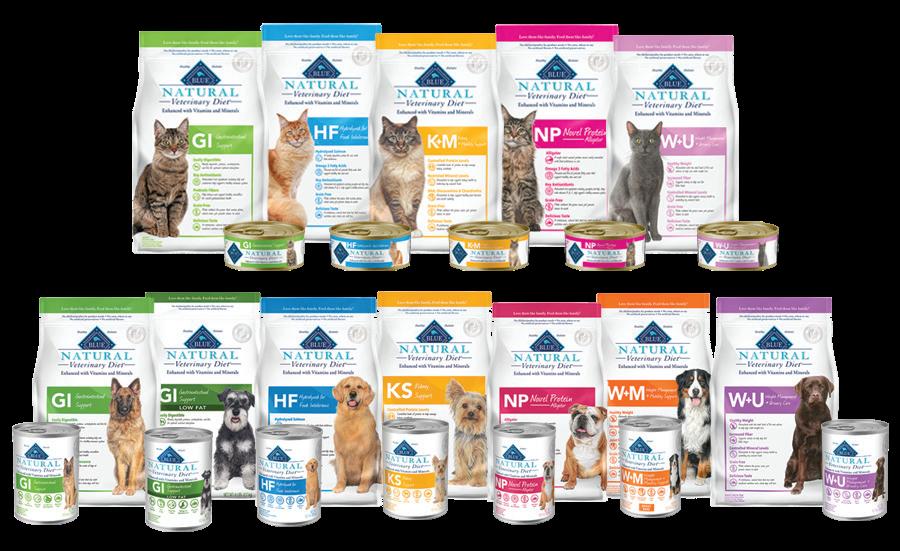
Processes should be implemented and staff trained to document communications in the medical records, including emails and text messages, which should be incorporated into the file. Emails should not be allowed to auto-delete and disappear. To the extent that texts, emails, and notes relate to treatment and care, they are by definition part of the medical record, and must be maintained for a period of three years after the animal’s last visit.

In the next issue of the California Veterinarian, we will address record keeping surrounding informed consent, treatment options, and denials of treatment.
The CVMA offers its member veterinarians one halfhour of telephone and research work per month with an attorney from Wilke Fleury LLP. Areas of law covered by the program include: VMB/licensure issues, regulatory and administrative law, business tax issues, business/professional advice, Cal/OSHA issues, contract issues, employment law, and practice ownership and organizational structure. For more information, visit the Membership tab at cvma.net.
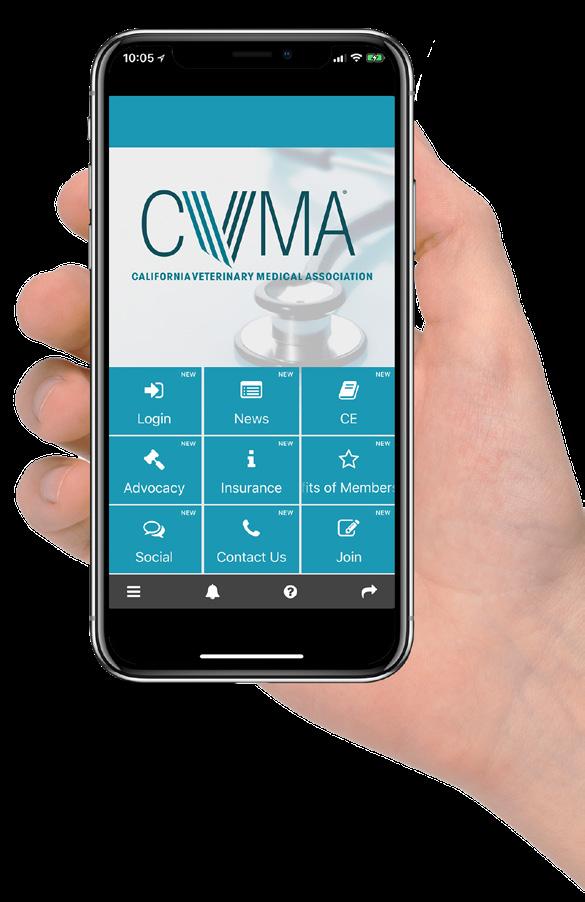
Stephen Marmaduke has been an attorney with Wilke Fleury for 30 years and has been practicing law in California for over 40 years. One of his primary focuses is the representation of physicians and medical groups in matters ranging from corporate structure, mergers and acquisitions, joint ventures, business transactions, regulatory issues, and professional employment. Mr. Marmaduke is part of the CVMA’s Legal Services Program, a program designed to assist CVMA member veterinarians with workplace safety, legal issues, and laws and regulations that affect the veterinary profession.

DOWNLOAD NOW AT THE GOOGLE PLAY AND APPLE STORES. TAKE THE CVMA WITH YOU Enjoy essential veterinary information and connection all in the palm of your hand. DOWNLOAD THE APP TODAY! Visit BlueVetConnect.com to learn about our full portfolio. Help manage health conditions with efficacious therapeutic solutions.
45 View this issue of the California Veterinarian online at cvma.net.
Applying Ergonomics to Reduce Injuries in Veterinary Practices
Working with animals in a veterinary practice can be physically demanding and, in certain instances, can result in injury. The size of the patient, temperament, circumstances of the visit, and tasks to be performed can all be contributing risk factors. To maintain a safe workplace, these factors must all be considered and addressed. One approach that can assist in this effort is the application of ergonomic principles.
Ergonomics has become a bit of a marketing buzzword that implies comfort, adjustability, good posture, and perhaps a fancy office chair or an alternative keyboard. It can be all of these, but ultimately the goal of ergonomics is to design (or modify) jobs so that they fit the worker and are within the safe limits of human performance. To do this, ergonomists identify and reduce ergonomic risk factors so that the worker is less fatigued and less likely to experience a cumulative trauma disorder (CTD). When done right, the worker will be more productive, less fatigued, and injury-free.
While the discipline of ergonomics considers physical, cognitive, environmental, and organizational factors, the focus here is on the physical factors. In the simplest terms, addressing physical factors can help reduce the strain and sprain injuries to shoulders, knees, and backs that are seen in many veterinary practices.
Physical ergonomic risk factors include forceful exertions (lifting a heavy dog, restraining an agitated animal), awkward postures (bending to lift from the ground, twisting while lifting, reaching overhead), repetitive motions (grasping, reaching, lifting—any awkward posture done repetitively), prolonged
postures or exertions (standing on a hard surface, working with the head tilted forward), and contact stress between the body and a hard surface (hand or wrist pressed against the hard edge of a table, gripping a tool with a poor handle design).
Not all hazards can be anticipated and addressed, but many can (at least to some extent), and focusing on those hazards with the idea of chipping away at ergonomic risk factors can pay dividends in making the environment safer for the worker, the patient, and the animal owner.
Ergonomics should be participative and include the input of employees doing the job. Questions like “What is physically the hardest or most tiring part of your job?” can be a good way to start. It can also be useful to ask, “What would you do to improve that part of your job?” The goal is to reduce or eliminate awkward postures, repetitive motions, and/or forceful exertions, as well as to minimize prolonged or sustained postures or exertions.
Although there are a variety of causes of injuries in the veterinary profession, some basic concepts apply. Animal handling, for instance, is largely about technique, not strength. Workers can use posture and technique to gain a biomechanical advantage. From a biomechanical standpoint, the worker has more leverage when the animal is closer, the proper technique is used, and an evaluation of the animal’s behavior to reduce any bite potential is conducted.
For more information and tips for preventing injuries in your practice using proper ergonomics, visit the Risk Management tab at visc-ins.com.
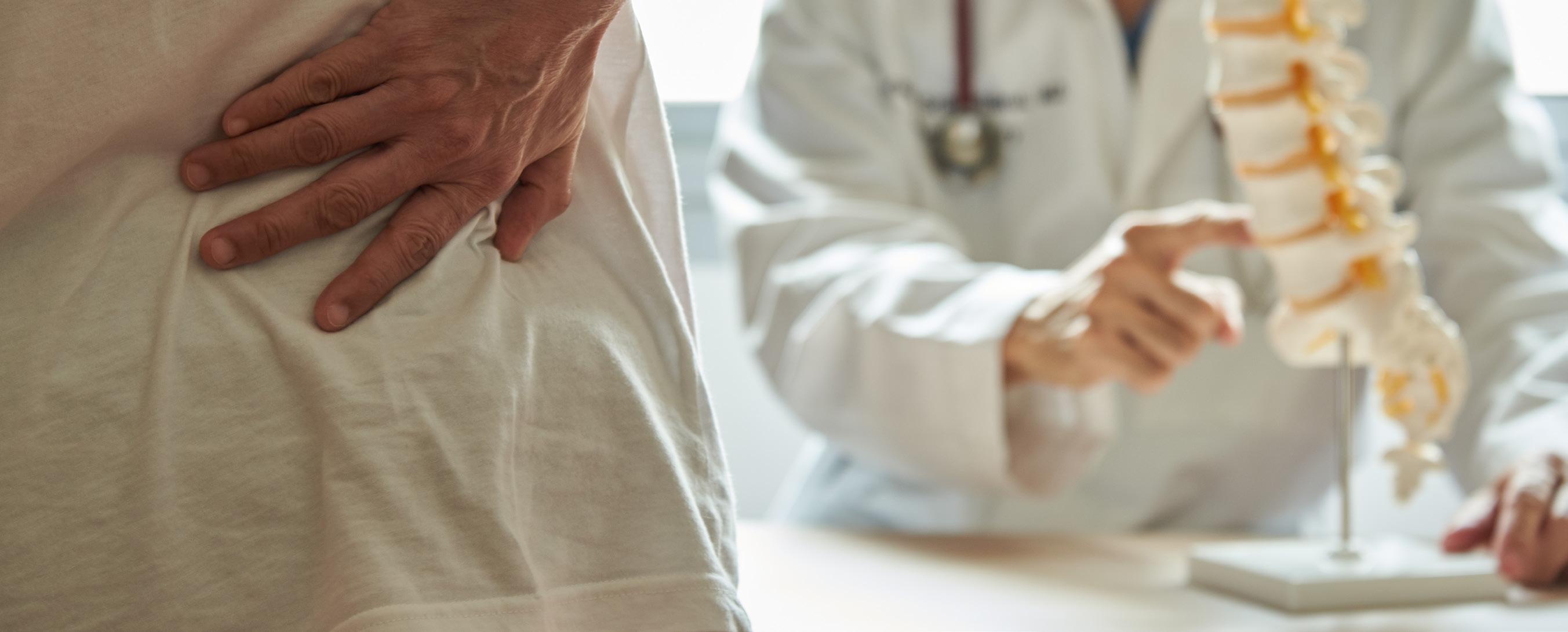
46 California Veterinarian • November–December 2022 cvma.net
Something to WAG About
The CVMA Congratulates…

Frank Ambrose, DVM, for celebrating his 70th birthday this November. Dr. Ambrose has practiced veterinary medicine for 40 years and is still going strong, operating the Ambrose Veterinary Hospital in Madera, CA. He spent his birthday sparring for 15 rounds at Trinity Boxing Club in Los Angeles. Happy birthday Dr. Ambrose, and keep it up!

Mike Dillon, the CVMA’s lobbyist for over 40 years, for retiring at the end of this year after a long career characterized by hard work and success. The longestrunning registered lobbyist in the state, Mike has assisted the CVMA in navigating hundreds of intricate issues over the years and has been instrumental in molding the veterinary profession into its current state. Mike, the CVMA thanks you for your decades of service, and we hope you enjoy your much-deserved retirement! (For more on Mike, please see the Director’s Corner on page 5.)
Laressa Dimalanta, RVT, for passing the exam to become a Certified Veterinary Practice Manager (CVMP). Laressa decided to pursue the CVPM license when she became a hospital manager in 2019, realizing that the certification would lead to the most fulfilling and rewarding role for herself within the veterinary team. She wanted to ensure that she had the knowledge and credentials to lead and mentor her team towards continued success and growth. Congratulations on this edifying achievement, Laressa!
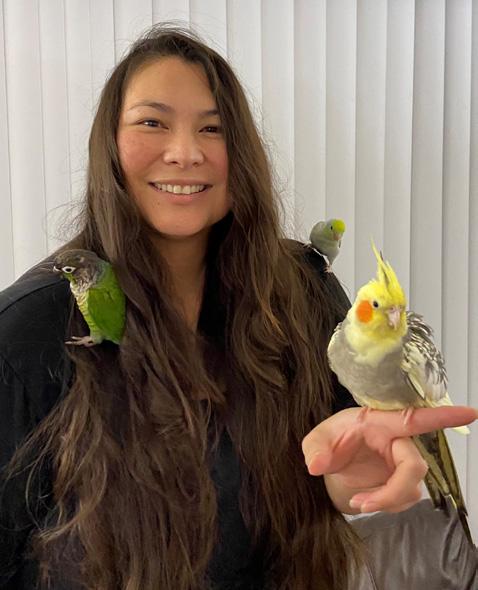
Barry Kipperman, DVM, for publishing his book Ethics in Veterinary Practice: Balancing Conflicting Interests. Dr. Kipperman, an instructor of veterinary ethics at the UC Davis School of Veterinary Medicine, co-authored and co-edited the book in order to help veterinarians, faculty, instructors, senior undergraduates, and veterinary students recognize and address real-life ethical dilemmas and relevant philosophical discussions about the moral status of animals, animal rights, and interests. Great work, Dr. Kipperman!

Edie Marshall, DVM, for being appointed as the at-large alternate representative for the AVMA Committee on Antimicrobials. Dr. Marshall, chief of the California Department of Food and Agriculture’s Antimicrobial Use and Stewardship program, started her three-year term on the committee this past August. In this role, she will help review and champion policy recommendations that support a One Health approach to the overarching issue of antimicrobial resistance. You have the CVMA’s full support, Dr. Marshall!

47 View this issue of the California Veterinarian online at cvma.net.
Got any good news? The CVMA would like to honor the diverse accomplishments of our members and their practices, whether a professional development or a personal milestone. Don’t hesitate! Please send in your good news and a fun photo to Taryn DeOilers, the CVMA’s Publications Manager, at tdeoilers@cvma.net to be considered.
SWEP Program Gives Students Real-World Experience
Every year, the CVMA offers the Summer Work Experience Program (SWEP) for students at the UC Davis School of Veterinary Medicine and the Western University of Health Sciences, College of Veterinary Medicine. Through SWEP, second- and third-year students are employed during the summer by veterinary practices across the state. This program gives students the opportunity to gain crucial, handson experience while also decreasing their student debt. Participating veterinary practices benefit from the experience as well by helping students in their education and by connecting with potential future colleagues.
Start Planning for Next Summer!
Summer may seem far away, but students have already begun seeking out internship and summer work opportunities.

Through SWEP, students will:
• Gain valuable work experience in a private practice setting.
• Contribute to a practice’s efforts to improve animal health.
• Earn while learning, simultaneously decreasing student debt.
Veterinary practices will:
• Forge relationships with potential future associates.
• Provide a student with valuable real-world experience.
• Play an active part in reducing student debt load.
• Add an enthusiastic employee to staff.
How Does SWEP Work?
Veterinarians throughout California will receive an email about SWEP this November with a link to a sign-up form. Interested practices should review, complete, and return the form to the CVMA by February 15, 2023.

Eligible student members will be informed at the end of February when the employment opportunities have been compiled and posted. This information will also be available in the student area at cvma.net. Students may contact veterinary practices directly to apply for a position.
Commit to the 2023 SWEP Program Now!
If you have any questions or have not received an email about SWEP by the end of November, please email the CVMA Student Services Manager, Laura Phillips, at lphillips@cvma.net or call 800.655.2862.
Preventive health measures include:
YEAR-END TAX PLANNING review and answer questions ANALYZE business & personal financials
FUTURE PLANNING tax payments, budgeting, and avoiding tax pitfalls
We offer tax preparation of personal & business tax returns in all 50 states.
C M Y CM MY CY CMY K gatto-third-vert-sept30.pdf 1 9/30/22 6:51 PM SWEP Summer Work Experience Program California Veterinarian • November–December 2022 cvma.net Student News 48
WesternU Veterinary Student Named an Inaugural Board of Trustees Honoree
Allison Belaunde, DVM 2026, has been named one of the inaugural recipients of the Western University of Health Sciences’ Board of Trustees Scholarship.
A native of Clifton, New Jersey, Belaunde graduated from Rutgers University this past May with a Bachelor of Science in animal science, with a concentration in pre-veterinary medicine and research and a minor in chemistry. She is interested in large animal medicine as well as zoological medicine.

Belaunde worked two part-time jobs while going to school full-time as an undergrad to support herself and her mom.
“I’m extremely humbled and grateful for this opportunity,” Belaunde said. “I never thought somebody like me—first generation, low income—would be doing something so big like this. Seven-year-old me just [wouldn’t] believe this is happening. I’m extremely grateful that I have the opportunity to be here today.”
WesternU’s Board of Trustees created the $6 million endowed scholarship this past spring to help remove financial barriers for students and increase student diversity
in the graduate health sciences and health professions workforce. The scholarship will cover 50 percent of Belaunde’s tuition each year and is renewable if she remains enrolled and in good standing in her academic program. Five WesternU students were awarded the new scholarship this fall—students from the College of Osteopathic Medicine of the Pacific-Northwest, College of Optometry, College of Health Sciences-Physician Assistant Studies, and the College of Graduate Nursing.
“I’d like to thank our present and expanding WesternU Board of Trustees for their tireless quest to enrich and shape the lives of our students,” said new WesternU President Robert Farias-Eisner, MD, Ph.D. “This scholarship fund confirms WesternU’s commitment to dismantling health disparities and broader systemic injustices that disproportionately affect economically disadvantaged and underrepresented groups.”
The UC Davis School of Veterinary Medicine enjoyed one of its best years ever in terms of external research funding. The school brought in $89 million to lend support to a wide range of research projects to advance animal, human, and environmental health.
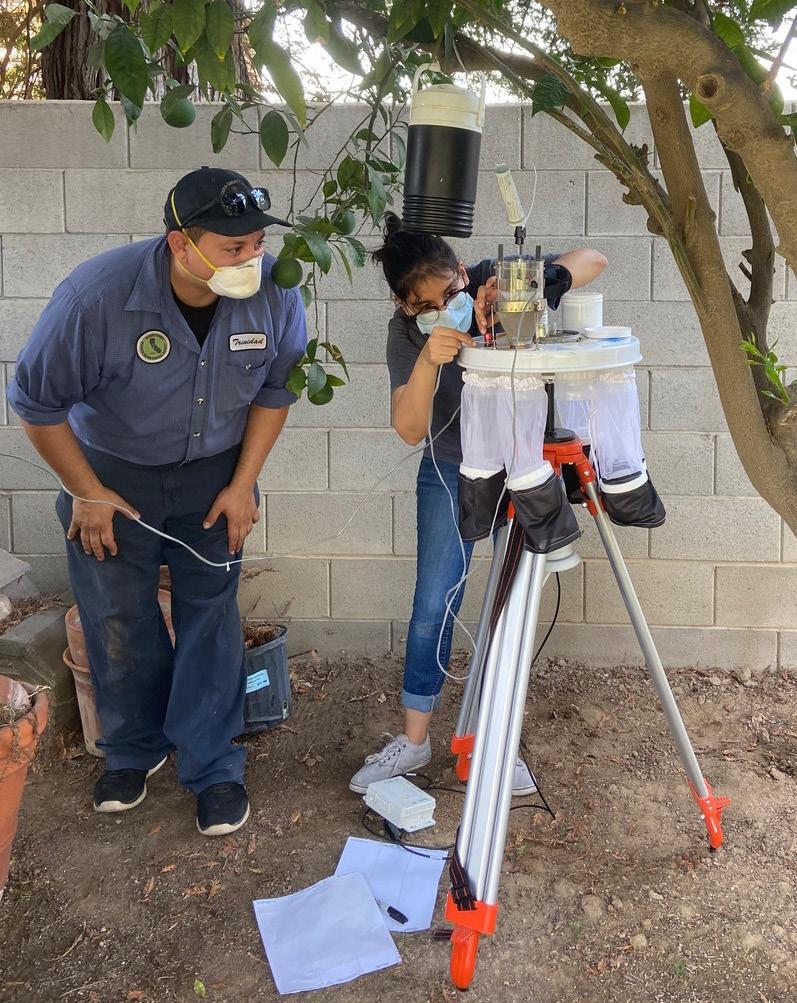
One of the leading research projects is from the school’s Pacific Southwest Center of Excellence in Vector-Borne Diseases (PacVec), which works to manage and prevent mosquito and tick-borne diseases. As these diseases are increasing and remain a serious public health threat, this research becomes more important every year. PacVec received a five-year, $10 million grant from the Centers for Disease Control and Prevention to continue its work in research, training, and outreach on vectors.
Another notable award is in landscape change, viruses, and disease transmissions. Through a project funded by
the National Science Foundation titled “Impacts of rapid landscape change and biodiversity on virus host specificity,” researchers plan to investigate emerging and reemerging viruses in transitional ecosystems where landscape change is most likely to influence wildlife-tohuman disease transmission.
The school is also partnering with the National Institute of Antimicrobial Resistance Research and Education and others to receive a $1.5 million cooperative agreement award from the U.S. Food and Drug Administration Center for Veterinary Medicine to support a project designed to improve antibiotic stewardship by prioritizing the most significant diseases in food animal production and identifying alternative treatment strategies.
49 View this issue of the California Veterinarian online at cvma.net. University News
UC Davis Receives Nearly $100M in Annual Research Funding, Including $10M to Fight Mosquito and Tick-Borne Diseases
Treasurer’s
Report Members can receive a copy of the CVMA’s current financial report by calling the CVMA’s home office at 916.649.0599.
Each year, the CVMA Finance Committee is presented with an annual draft budget and recommends a final draft to the CVMA Board of Governors. The Board reviews the final draft, makes necessary updates, and approves the budget in accordance with the CVMA’s objective of maintaining fiscal responsibility.
As part of its review, the Board assesses both membership numbers and overall sources of revenue. In that regard, total membership as of June 30, 2022 was 7,508 members. At fiscal year-end, 33% of the CVMA’s revenue was derived from membership dues, 42% from the Pacific Veterinary Conference and other continuing education seminars, and 25% from other income. Non-dues revenue assists in supplementing the many programs and projects that the CVMA offers its membership, such as the recently launched Member Assistance Program provided by LifeWorks, providing work-life/wellbeing resources to our members.

This year, there was a great deal of Board discussion regarding the lack of sufficient funds in the CVMA PAC to support our legislative efforts. At the April 2022 Board of Governors meeting, a motion was passed to approve the 2022–23 budget with a $167,000 shortfall (an estimate based on the allocation of $50 from each active member’s dues to the CVMA PAC). Budgeted revenue for the 2022–23 fiscal year is $3,643,466 and budgeted expense is $3,810,466.
Our continuing education programs have remained strong throughout the global pandemic. We were able to adapt most of our seminars to a “hybrid” offering, which has been
TOTAL MEMBERSHIP AS OF JUNE 30, 2022
well-received by our registrants, and the Pacific Veterinary Conference 2022 was a record year in terms of attendance.
The CVMA’s investments are overseen by the Investment Committee and approved by the Board of Governors. The CVMA’s investment firm administers the portfolio’s asset allocation and makes suggestions based on periodic reviews of the asset performance and goals set forth by the CVMA Investment Policy. During the course of the CVMA’s 2021–22 fiscal year, the Board approved the addition of separate sums of $800,000 (July 2021) and $600,000 (March 2022) to the investment portfolio.
In April of 2021, the CVMA was granted a Paycheck Protection Program loan in the amount of $264,000; the loan was granted full forgiveness in November 2021.
The CVMA maintains a reserves total of over 100% of the current budget. This amount exceeds the Board’s goal of maintaining 50% of the current annual budget in reserves, which is a minimum recommended reserve for professional membership associations.
I will be reviewing the proposed 2023–24 budget in January of 2023. The Finance Committee meets in February to review the proposed budget in detail and recommend a final 2023–24 budget to the Board of Governors at its March meeting. The Board will review the proposed budget, make revisions if needed, and approve the final budget for the next fiscal year.
7,508 ESTIMATED PAC 2022–23 DUES REVENUE $167,000 NET PROFIT 2021–22 BUDGET YEAR $198,884 42%
CVMA REVENUE SOURCES
25% 33% Membership Dues Pacific Veterinary Conference and other continuing education seminars Other income
By George Bishop, DVM 50 California Veterinarian • November–December 2022 cvma.net
How to Place a Classified Ad
Place your ad in the Career Center at cvma.net. There are two options for classified advertising:
1. Online advertising
2. Online and in one issue of the California Veterinarian
CVMA Members NonMembers
Classified Advertising
*Price includes the first six lines of text. Each additional line is $10/$11 for non-members. A line consists of approximately 50 characters.
**If you wish to place a print ad only, contact Laura Phillips at 916.649.0599 or classifieds@cvma.net.
Online only
30 days online $169 $249
60 days online $269 $349
90 days online $369 $449
Online and in one issue of the California Veterinarian
60 days online + one issue of the California Veterinarian $319 $399
90 days online + one issue of the California Veterinarian $419 $499
POST AN ANONYMOUS RESUME OR AD
Resume— Post a confidential resume. Go to cvma.net. Click on the Resources tab then Classifieds in the right menu to get started.

Ad — Place a confidential ad by creating an anonymous email address and using it when posting your ad.
If you have any questions, please contact customer service at 860.437.5700, clientserv@yourmembership. com, or classifieds@cvma.net.
DEADLINE DATES FOR AD SUBMISSIONS IN THE CALIFORNIA VETERINARIAN:
Issue
Jan/Feb
March/April
May/June
July/Aug
Sept/Oct
Nov/Dec
Deadline
December 5
February 5
April 5
June 5
August 5
October 5
If your ad is received after the deadline, it will go into the following month’s California Veterinarian. After the deadline, the CVMA cannot alter or cancel ads. The CVMA reserves the right to edit copy and does not assume liability for contents of classified advertising. Prices subject to change without notice.
POSITIONS OFFERED
NORTHERN CALIFORNIA Veterinarians
Employment opportunity at an established, profitable practice, featuring a flexible schedule, to allow plenty of personal time, and generous signing bonus, housing and student loan reimbursement. The Clinic is privately owned, well loved by the community and offers an exceptional support staff. The emphasis is always on learning and quality of care. The Facility itself boasts modern updates, including digital x-ray, dental x-ray, full in-house lab and ultrasound. We also have a fully stocked pet store. Located in the scenic Santa Cruz Mountains and with easy access to the Bay Area, this job comes with a most desirable lifestyle. The right candidate can expect a generous compensation package, ongoing education and an assertive career path, including ownership potential. Email BCVet95006@gmail.com.
51 View this issue of the California Veterinarian online at cvma.net.
SOUTHERN CALIFORNIA Veterinarians
Seeking an experienced veterinarian for permanent work in Santa Clarita Valley. Hours Monday-Friday 8am-1pm and 2pm-6pm. Saturday 8am-3pm. Candidate should have at least 1 year of experience practicing in a small animal veterinary clinic. High-quality, busy, practice with great support staff and a wonderful clientele. Email evergreenanimal@sbcglobal.net.
Full-time veterinarian wanted at Agoura Animal Clinic, a small animal, general practice that has provided excellent care for dogs, cats, exotics, pocket pets, and birds for over 40 years in beautiful Agoura Hills, California. Experience with surgeries and exotics is a huge plus, and we are looking for a potential leader for our practice! We offer a healthy work-life balance, excellent support staff, a flexible schedule, no on-call requirements, generous benefits, and a competitive salary with a sign-on bonus available. The resumes should be emailed to either myself jsafanifranko@vetcor.com, Dr. Marc Silverman mhsdvm@aol.com, or Cesar Molina cmolina@vetcor.com.
CENTRAL CALIFORNIA Veterinarians
We are a well-established 2 doctor private practice in Fresno looking to add a full-time Associate Veterinarian to our team. Our clinic mainly focuses on wellness care and routine surgery/dentals. We are equipped with digital X-ray, ultrasound, and in-house lab. We operate Monday-Friday with no evening or emergency shifts. Salary: $140,000 (commensurate with experience). 401k, Health Insurance, PTO, and CE. Mentorship is available. New graduates are welcome. Email palmbluffvet@gmail.com.
Here’s a vet “job” ad you don’t see every day. You: Are a compassionate, independent, licensed veterinarian desiring freedom from burn-out and 10-hour workdays, a truly flexible schedule, an unbelievable income, incredibly grateful clients and the unattainable unicorn of work-life balance. Us: We are in-home euthanasia vets who saw a need and created a website platform connecting pet owners seeking In-home pet euthanasia services with veterinarians in their area. We are proactively looking for a vet in the Fresno CA area interested in offering this service as an independent contractor. Together: Our website and platform allows you, the vet, to create and post your own schedule which pet owners book directly online, handles payment as well as prepares pet owners for their appointments with you. Our pet owners are incredibly grateful for this service and demand is growing. Our vets gross $20-25k a month choosing to help on average 45-50 pets a month (10-14 pets a week). We will assist, train and guide you in preparing to offer this service. You may email me at karen@codapet.com or text 559.313.6319 for more information or visit our signup page https://bit.ly/codapetsignup.
HOSPITALS – SALES/LEASE/BUY
Four Paws Pet Hospital is a well-established small animal hospital in Crescent City, California. 4 Paws generates more than one million dollars per year with a 4-day work week and no after hour emergency coverage. Solid and consistent Net Profit before owner salary and debt service on the purchase. Fantastic location where the mountains meet the beautiful Pacific coastline. Excellent lease terms available for the facility or the building and hospital property are available for purchase now. Great location in town, nicely equipped with an experienced and skilled staff. Are you tired of being an employed associate with limited opportunity to own your own hospital and control your professional life and personal activities? There are many possibilities to grow this practice beyond its current activity level by a motivated and dedicated new owner(s). Seller has operated this practice for 28 years in a solo capacity and is willing to remain at the hospital to assist a new veterinarian during the transition period, and for an agreed period of time on a part-time basis following the sale – if desired by a new owner. The practice asking price is $675,000 and all offers will be considered. Real Estate available for lease with an option to purchase at a later date, or immediate purchase at the time the practice is acquired. To obtain more information about this purchase opportunity contact Dr. Mark Franusich at mfranusich@cfaith.com or long-time Practice Consultant to this Hospital: Jim Remillard, RMA, Inc. at jremillard@aol.com, or phone 530.836.7332/office; or 530.308.8620/mobile.
52 Classified Advertising California Veterinarian • November–December 2022 cvma.net
Brokers and Appraisers
Practice and Real Estate Sales
Transition Specialists Practice Appraisals
Ellie Wattles, DVM, President, Broker
Beka Herrera, Vice President, Broker
Connie Burke, CPA, CVA, CM&AA
SAN DIEGO, EAST COUNTY: Near perfect climate. Leisurely drive to beaches and downtown. Growing population & highly rated school districts, along with endless outdoor activities, easy access to retail and commercial areas offers a highly desirable area in which to live and have a business. Well- established & very organized practice located in an active, popular shopping center. ~1,600 sq. ft. leased facility with 2 exam rooms, digital X-Ray and new ultrasound. 2022 projected gross~$874,000. Exceptional cash flow of approximately 39%. M MAJOR PRICE REDUCTION! MOTIVATED SELLER! PRACTICE PRICE: $600,000
SAN BERNARDINO COUNTY, INLAND EMPIRE: Popular community with new residents because of its affordable and upscale housing. The community is only 45 minutes from Palm Springs & close to all the Southern CA’s attractions. PX is conveniently located in a high activity shopping center. Leased 2,100 sq. ft. facility includes 2 exam rooms as well as a large treatment area. Well-equipped practice includes digital X-Ray, digital dental X-Ray, ultrasound and IDEXX lab equipment. 2022 Projected Gross ~$1.2 Million. N NEW LISTING! PRACTICE PRICE: $960,000 MOTIVATED SELLER
SANTA CRUZ COUNTY, SCOTTS VALLEY: Located about six miles north of the City of Santa Cruz and 26 miles southwest of San Jose. Historic downtown, ideal weather & various amenities. Well established practice situated along a major thoroughfare. Free-standing facility is ~ 2,000 sq. ft. with 2 exam rooms. Equipment includes DR X-Ray & IDEXX lab. 2022 projected gross ~$957,000. P PRACTICE PRICE: $595,000
SUTTER COUNTY: Turn-key opportunity! Located within an hour’s drive from Sacramento. The community provides convenient shopping & amenities. The practice is located adjacent to a major thoroughfare with excellent street visibility & ample parking. Spacious ~2,700 sq. ft. free-standing facility offers 3 exam rooms, 20+ cages & 20+ runs. Equipment includes newer digital X-Ray, ultrasound unit, dental X-Ray & CO2 Laser. 2021 Gross ~$1,087,000 produced with limited hours. Currently operated as a 1 DVM practice with great staff. Exceptional profitability. P PRACTICE PRICE: $950,000 REAL ESTATE PRICE: $560,000
NORTHERN CA, NORTH VALLEY: Pastoral, quaint community located just a few hours from Sacramento & Tahoe. Beautiful 3,000 sq. ft. free-standing facility. Well maintained hospital built in 2005. Reputable, full service PX, well equipped with leased IDEXX lab & digital X-RAY. Gross increases year over year. Great profitability and excellent staff. 2021 Gross ~$1.3 Million produced with 1 DVM/day and limited doctor hours, only 5 days/week. Seller open to remaining for a transition post-sale, as desired by buyer. PRACTICE PRICE: $1,100,000. REAL ESTATE PRICE: $625,000.
CENTRAL VALLEY, SAN JOAQUIN COUNTY: Just 2 hours from major cities, the coast & the mountains. This semi-rural community has a strong agricultural & general broad economic base, offering affordable housing in the surrounding area. General, full-service small animal practice. The free-standing practice facility consists of ~6,900 sq. ft. offering multiple exam rooms & cages with room for future expansion, if desired. Equipment includes extensive IDEXX lab & 2 digital X-Rays. Multi- DVM practice with well trained staff. 2021 gross ~$1,750,000. N NEW LISTING! PRACTICE PRICE: $750,000 REAL ESTATE PRICE: $1,750,000
KERN COUNTY: Situated in a growing community located ~1 hour North of LA with a strong agricultural, oil & general broad economic base including a new Amazon fulfillment center. There are many nearby amenities & affordable housing. This general Small Animal practice offers an ~3,000 sq. ft. facility with 3 exam rooms, 60+ cages and 10 runs. Equipment includes ultrasound & digital X-RAY. 2021 Gross ~$1,260,000. Potential to significantly increase hours of operation to grow productivity. P PRACTICE PRICE: $667,000 REAL ESTATE PRICE: $425,000
SAN JOAQUIN VALLEY: PRICE REDUCTION! Short commute to major cities, the coast & the mountains. This community’s unique western atmosphere provides growth opportunities. Thriving community w/ affordable housing. General full service, small animal practice, free-standing ~1,800 sq. ft. facility with 3 exam rooms. 2020 Gross ~$1,016,000 with exceptional profitability as currently operated PRACTICE PRICE: $895,000
REAL ESTATE PRICE: $400,000
VENTURA COUNTY: Located in a great upscale community with excellent amenities, desirable demographics & highly rated schools. Family-friendly community. Attractive & modern, ~1,800 sq. ft leased facility is strategically located in popular shopping center. Equipment includes Abaxis Lab & Digital X-Ray. Underutilized PX /limited DVM hours. 2021 Gross~$455,000. PX is offered at less than a start-up PRACTICE PRICE ONLY: $200,000
MENDOCINO COUNTY: Wanna getaway? Just 2 hours north of the San Francisco Bay Area & west of Sacramento. This area boasts spectacular scenery & distinctive wineries. Hundreds of miles of hiking trails, verdant hills & secluded lakes residents can easily find solitude & beauty. 1 PT DVM PX. ~1,500 sq.ft leasehold facility located in a small strip-center. 2021 Gross~ $556,000 produced with very limited hours. P PRACTICE PRICE ONLY: $120,000
SONOMA COUNTY, COTATI- A charming suburb of Santa Rosa: Approximately 1 hour north of San Francisco. Located in a quaint family-oriented community. Spacious facility with many opportunities for redesign. ~2,300 sq. ft. reasonably priced free-standing facility is situated on a 6,000 sq. ft. lot. Equipment including DR X-Ray. 2021 Gross ~$1,080,000. Normalized cash flow as currently operated generates approximately $485,000 (46%), providing exceptional profitability. T TERRIFIC POTENTIAL! PRACTICE PRICE: $799,000 REAL ESTATE PRICE: $500,000
Celebrating our 30th year assisting veterinarians!
Contact us to learn how we can help achieve your goals of selling or buying.
545 Sespe Avenue Fillmore, CA 93015
Phone: 805.524.3195
Fax: 805.524.3192
E-mail: PacProInc@aol.com Website: www.pacificproinc.com
Broker - DRE #01140877

Classified Advertising 53 View this issue of the California Veterinarian online at cvma.net.
8. General business office of publisher: CVMA, 1400 River Park Drive, Suite 100, Sacramento, CA 95815-4505
9. Full name and address of publisher: Daniel Baxter, CVMA, 1400 River Park Drive, Suite 100, Sacramento, CA 95815-4505.
Full name and address of editor: Taryn DeOilers, CVMA, 1400 River Park Drive, Suite 100, Sacramento, CA 95815-4505.
Full name and address of managing editor: Kristen Calderon, CVMA, 1400 River Park Drive, Suite 100, Sacramento, CA 95815-4505.
10. Owner: California Veterinary Medical Association, 1400 River Park Drive, Suite 100, Sacramento, CA 95815-4505. Stockholders owning or holding 1 percent or more of the total amount of stock: none.
11. Known bondholders, mortgagees, and other security holders owning or holding 1 percent or more of total amount of bonds, mortgages, or other securities: none.
12. The purpose, function, and nonprofit status of this organization and the exempt status for Federal income tax purposes: has not changed during the preceding 12 months. 13 Publication title:
1. Publication Title: California Veterinarian 2. Publication No. 004-347 3. Filing date: October 11, 2022 4. Issue frequency: Bi-monthly 5. Number of issues published annually: 6 6. Annual subscription price:
Office of publication:
Veterinary Medical
$50 7.
California
Association (CVMA), 1400 River Park Drive, Suite 100, Sacramento, CA 95815-4505
California Veterinarian
circulation
September 1, 2022 15. Extent and nature of circulation: a.Total Number of Copies (Net press run) b.Paid Circulation (By Mail and Outside the Mail) (1) Mailed Outside-County Paid Subscriptions 13,607 14,077 (2) Mailed In-County Paid Subscriptions 0 0 (3) Paid Distribution Outside the Mails Including Sales Through Dealers and Carriers, Street Vendors, Counter Sales and Other Paid Distribution Outside the USPS® 0 0 (4) Paid Distribution by Other Classes of Mail Through the USPS 0 0 c.Total Paid Distribution 13,607 14,077 d.Free or Nominal Rate Distribution (1) Outside-County 0 0 (2) In-County 0 0 (3) Other Classes Mailed Through the USPS 0 0 (4) Outside the Mail 0 0 e.Total Free or Nominal Rate Distribution 0 0 f.Total Distribution 13,607 14,077 g. Copies not Distributed 256 300 h. Total 14,377 13,607 i.Percent Paid 100% 100% 16. Publication of Statement of Ownership: Publication required. Will be printed in the November/December 2022 issue of this publication. 17. Signature and Title of Editor, Publisher, Business Manager, or Owner. I certify that all information on this form is true and complete: Kristen Calderon, Managing Editor 10/11/22 Statement of Ownership, Management, and Circulation Required by 39 U.S.C. 3685 No. Copies of Single Issue Published Nearest to Filing Date 14,377 Average No. Copies Each Issue During Preceding 12 Mos. 13,863 Blue Natural Veterinary Diet . . . . . . . . . . . . . . . . . . . . . . . . . . . . . . . . . . . . . . . . . . . . . . . . . . . 45 Gatto . . . . . . . . . . . . . . . . . . . . . . . . . . . . . . . . . . . . . . . . . . . . . . . . . . . . . . . . . . . . . . . . . . . . . . . . . . 48 LASERRIFFIC . . . . . . . . . . . . . . . . . . . . . . . . . . . . . . . . . . . . . . . . . . . . . . . . . . . . . . . . . . . . . . . . . . . 14 Pacific Professionals . . . . . . . . . . . . . . . . . . . . . . . . . . . . . . . . . . . . . . . . . . . . . . . . . . . . . . . . . . . 53 Preferred Employers Insurance . . . . . . . . . . . . . . . . . . . . . . . . . . . . . . . . . . . . . . . . . . . . . . . . . 2 Simmons . . . . . . . . . . . . . . . . . . . . . . . . . . . . . . . . . . . . . . . . . . . . . . . . . . . . . . . . . . . . . . . . . . . . . . 55 VISC . . . . . . . . . . . . . . . . . . . . . . . . . . . . . . . . . . . . . . . . . . . . . . . . . . . . . . . . . . . . . . . . . . . . . . . . . . . 56 Advertising Index 54 California Veterinarian • November–December 2022 cvma.net
14 Issue date for
data:
NCCH6 New Listing! If you are looking for a 2 DVM small animal practice in a great community, loaded with recreation, and a practice that produces a high after-debt compensation level for the buyer so you can afford to do just about anything, then stop looking! This practice was established in 1991 and is in a 2,946 square foot leasehold space with 3 exam rooms. Nestled right next to the Sierras, you can be in the mountains in minutes or head south to Sacramento. Revenue has grown steadily over the past few years, 2021 was over $1.5 million. In addition to good growth and revenue this practice also has strong profitability. You can purchase the practice and still expect to have approximately $400,000 in after debt income. If you love the outdoors, want time to enjoy it, and hate living on a budget you owe it to yourself to see this practice. It’s a medical practice and money machine all rolled into one. Practice Price: $1,500,000

NCPV7 New Listing! 100% small animal practice located in a 2,000+ square foot free standing leased facility on a major thoroughfare in a larger city with a population over 311,000. In addition to all the amenities of a large community this centrally located city is approximately 3 hours from Lake Tahoe, 2 hours from San Francisco, Napa and 1 hour from Sacramento. Gross revenue was over $1.3M in 2021. Practice price $800,000
NC66 Price Reduced! Highly motivated seller! 1+ DVM small animal practice located in a freestanding building that is 2,400 square feet on nearly a 1-acre lot. It was built in 1998, has 2 exam rooms and is constructed of stone & brick. Operated Monday thru Friday with no current office hours on the weekends providing plenty of personal time off. Revenue has been increasing yearly, 2021 was over $1.1M and 2022 should beat that. And that is on a 4.5-day work week! Expected after-debt income is expected to be over $150,000 after both the practice and real estate loan payments.
Practice Price: $650,000 Real Estate: $695,000.
SCV1 New Price! Live close to Los Angeles but far enough away to enjoy rolling hills, clean air and less traffic. The area supports a strong economy centered around small business. The community is in a perfect location and is easily connected to all southern California. Live thirty minutes from the beach, mountains, and an international airport. This 1 DVM Small Animal practice is in a large 3,600 sq. ft freestanding facility with 5 exam rooms. Other features include indoor runs, boarding ability, multiple office spaces and stay-of-theart ICU area. 2021 Revenue was greater than $770,000 and has had consistent growth from 2018 to present. Buyer’s after-debt income projected to be greater than $200,000 per year! Practice has been appraised by a nationally known CPA firm at $799,000. Asking price is $750,000 OBO
NCTC5 2 DVM small animal practice located in a newer 4,000 sq. foot free-standing facility. This thriving business is in a peaceful recreational town loaded with historic buildings, art galleries, and just minutes from numerous mountain activities. There are over 50 miles of trails for hiking, running, biking and horseback riding and one of Northern California’s favorite lakes is just a short 5-mile drive. All the big city conveniences are less than an hour’s drive. When the main part of California is baking in 100-degree heat, this mountain community is usually 20 degrees cooler. Gross revenue has been over $1.6 million in the last couple of years. Projected after-debt income should be over $150,000. Practice Price: $850,000 Real Estate Price: $1,000,000.
SCW101 Located in the San Fernando Valley is a 2 DVM small animal clinic grossing over $1.2 million in 2021. The San Fernando Valley is located just north of LA and has great communities and strong business industries. The practice sits in the SW region of the valley and is home to approximately 67,000 residents. It is considered one of the least dense neighborhoods in the Los Angeles area. The facility is a 2,001 square feet free-standing stucco wood building on a 4,258 square foot lot with 2 exam rooms. Surrounding the facility is a mix of commercial property and residential neighborhoods. The San Fernando Valley is a highly desired and great place to live. There are endless opportunities for entertainment and recreation. Expected after debt income is greater than $170,000. Practice: $920,000 Real Estate: $850,000
NCM6 1 DVM small animal practice located in the foothills of Mariposa County in a quaint historic town, but close to large metropolitan areas. The practice is located in a 2,910 sq. ft. free standing facility. The surrounding Sierra Nevada foothills offers immense outdoor recreation opportunities. The community is home to numerous events and music festivals all year long. Yosemite National Park is only an hour drive, and there are many large reservoirs and mountain lakes nearby. The practice was established in 1986 and currently operates 5 days a week. For the past couple of years gross revenue has been just over $700,000. Expected after debt income is projected to be over $160,000 a year. Practice Price: $497,000 Real Estate Price: approximately $550,000 depending upon how big of a lot is split off the total 10 acres owned by the seller. (ask us about the specifics).
NCPR11 Extremely rare opportunity to work and live in Northern California paradise. Very healthy small animal, country clinic. Decades of repeated financial growth. Vet clinic and comfortable, sunlit living space with artist studio, reside on nearly 2 acres. Just a minute walk to restaurants, art, music. Outdoor adventure mecca! World-renowned: hiking, biking, horseback riding, swimming, surfing, sailing and kayaking. All this and only 40 miles to San Francisco! Clinic currently open Monday-Friday 9-5; plenty of room to expand hours or keep your weekends to yourself! This 1.5 DVM practice resides in a 2,604 square foot building. 2021 gross revenue was $1,164,801, up >$100K over 2020. Practice Price: $799,000 Real Estate Price: $1,800,000
55 Visit the Pacific Veterinary Conference online at PacVet.net www.simmonsinc.com Byron Farquer, DVM, CVA pacific@simmonsinc.com Dardalee Bussell, DVM (209) 845—2088 We have the experience, resources and exper�se to help you locate and purchase your next prac�ce! Simmons & Associates has the whole state covered! Check out these great lis�ngs!
























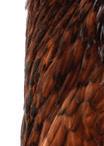














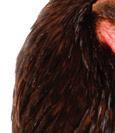
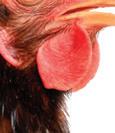













































































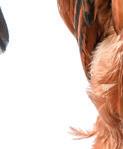






















Call VISC at 888.762.3143 or email info@visc-ins.com for solutions to all your insurance needs. Business Package | Veterinary Malpractice | VMB Defense | Employment Practices Liability (EPLI) | Workers’ Compensation Commercial Auto/Umbrella | Homeowners | Renters | Auto | Boat | Personal Umbrella | Long-Term Care | Disability | Life Discover the value of VISC – Specializing in insuring veterinary professionals. Does your insurance stand out from the rest? Call 888.762.3143 or email info@visc-ins.com for solutions to all your insurance needs. VISC is a wholly owned subsidiary of the California Veterinary Medical Association. CA Lic. # 0F64180 Business Package | Veterinary Malpractice | VMB Defense | Employment Practices Liability (EPLI) | Workers’ Compensation Commercial Auto/Umbrella | Homeowners | Renters | Auto | Boat | Personal Umbrella | Long-Term Care | Disability | Life Does your insurance stand out from the rest? Discover the value of VISC – Specializing in insuring veterinary professionals.











 Dan Baxter, Executive Director
Dan Baxter, Executive Director







 By Grant Miller, DVM, CVMA Director of Regulatory Affairs
By Grant Miller, DVM, CVMA Director of Regulatory Affairs





















































































































































































































